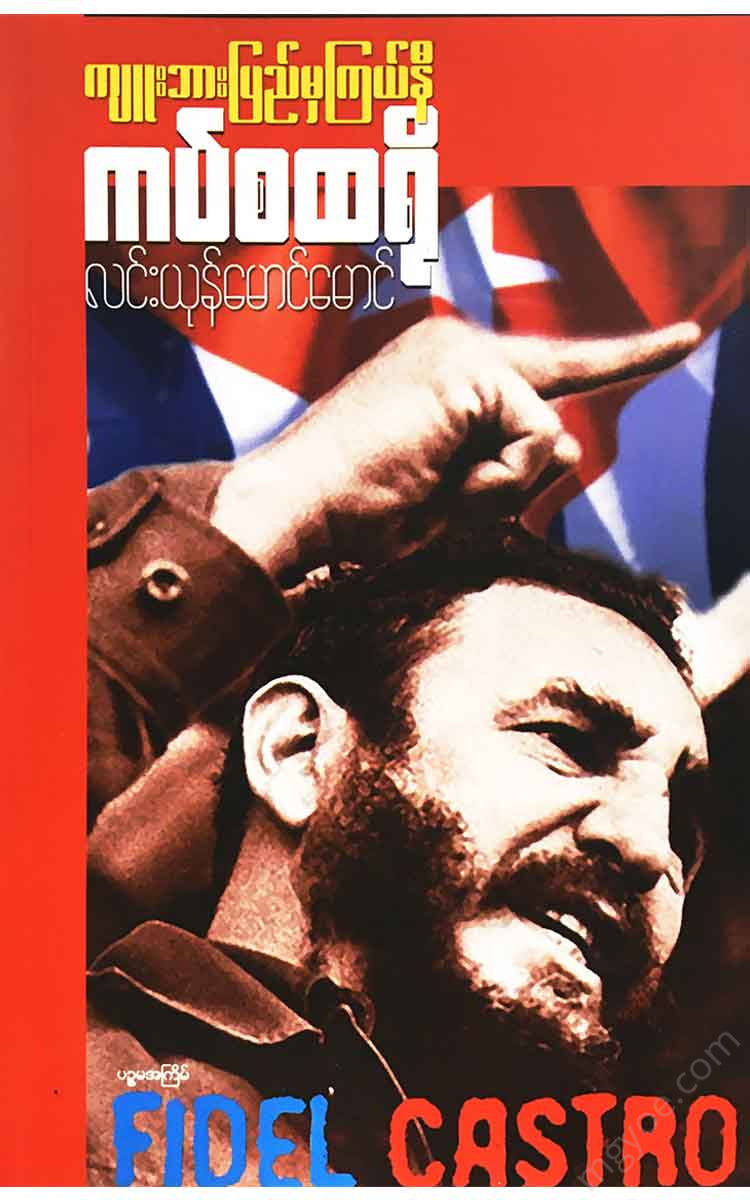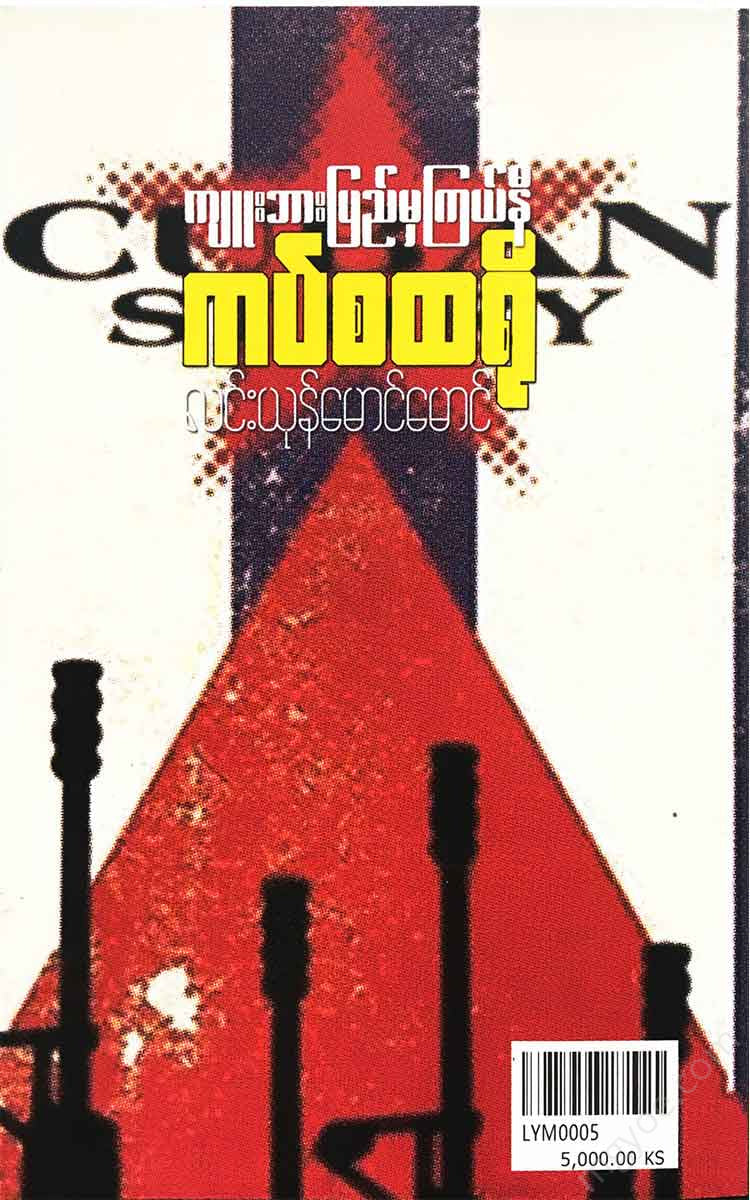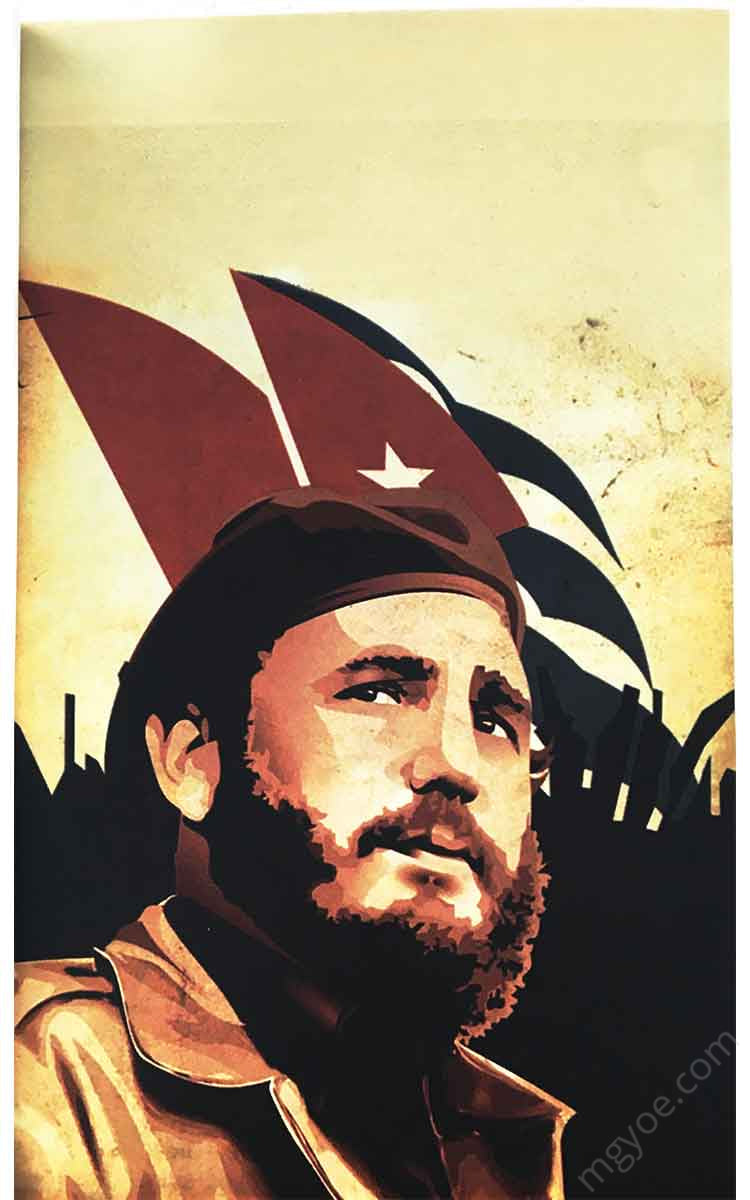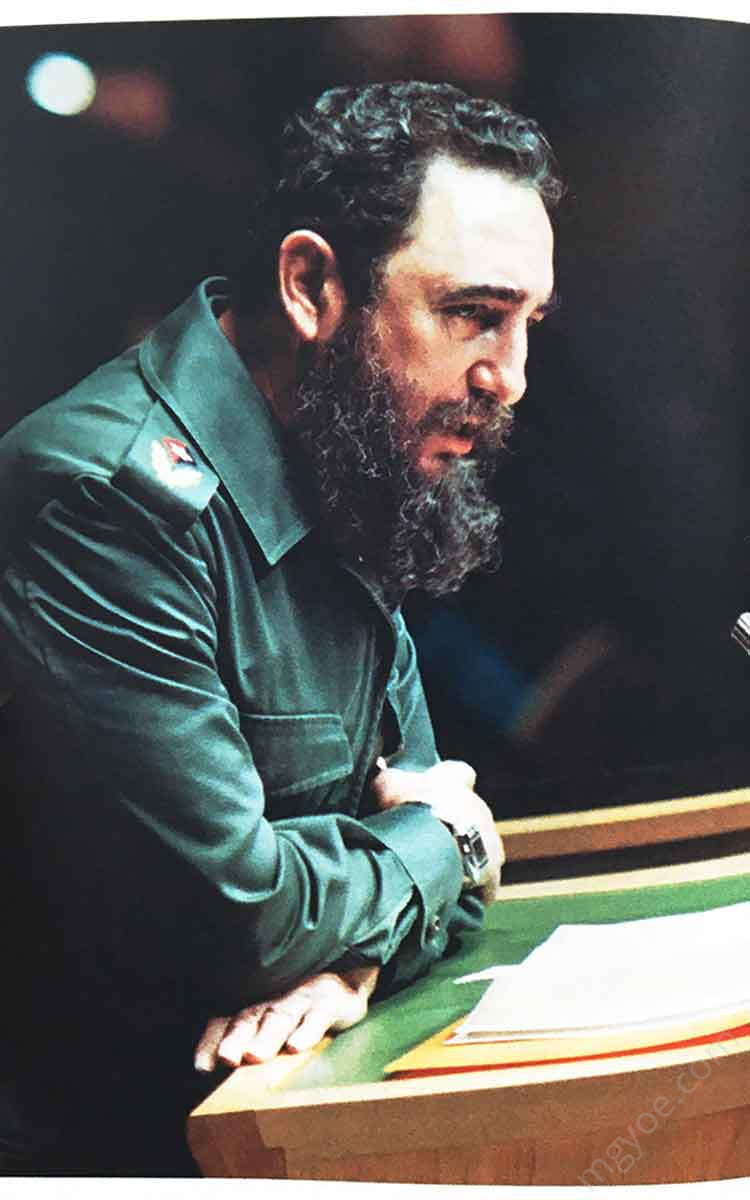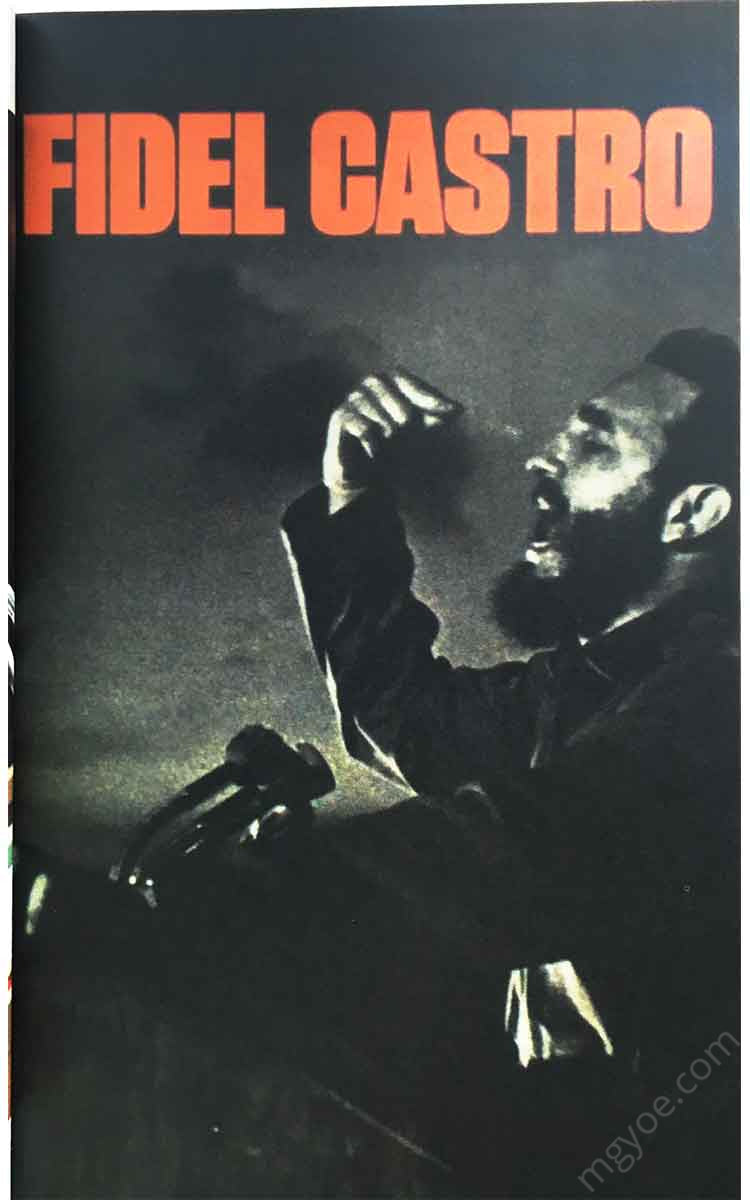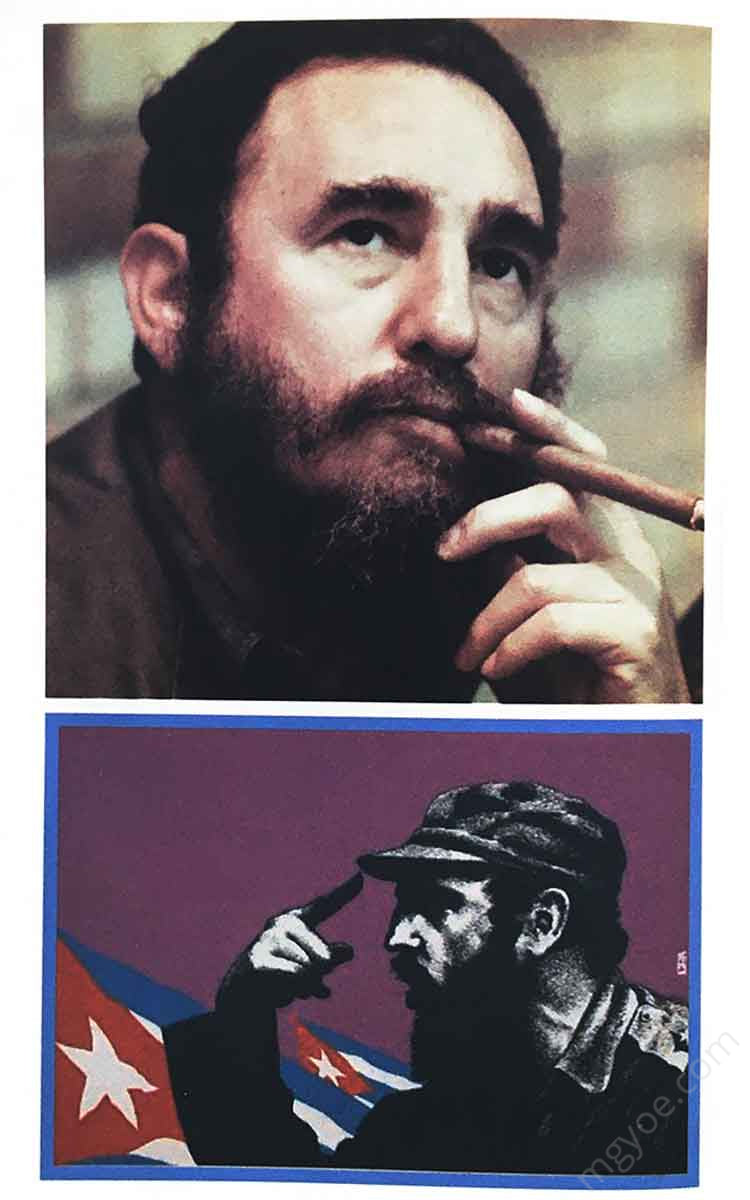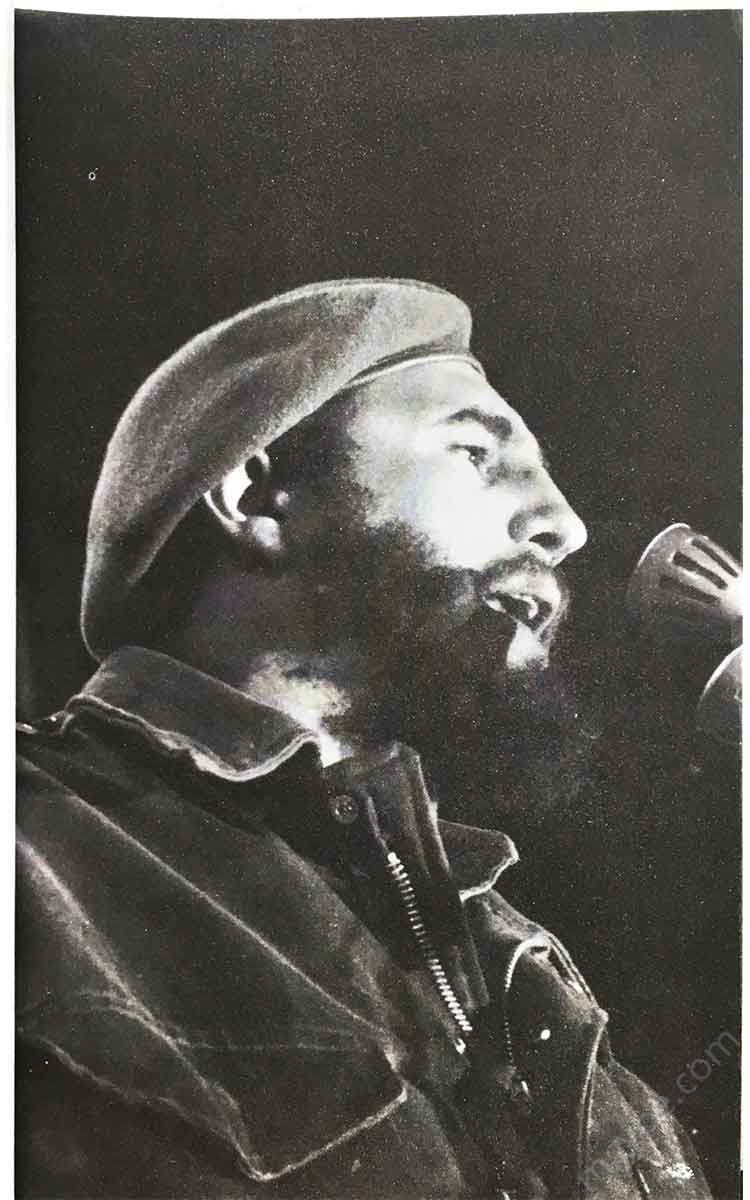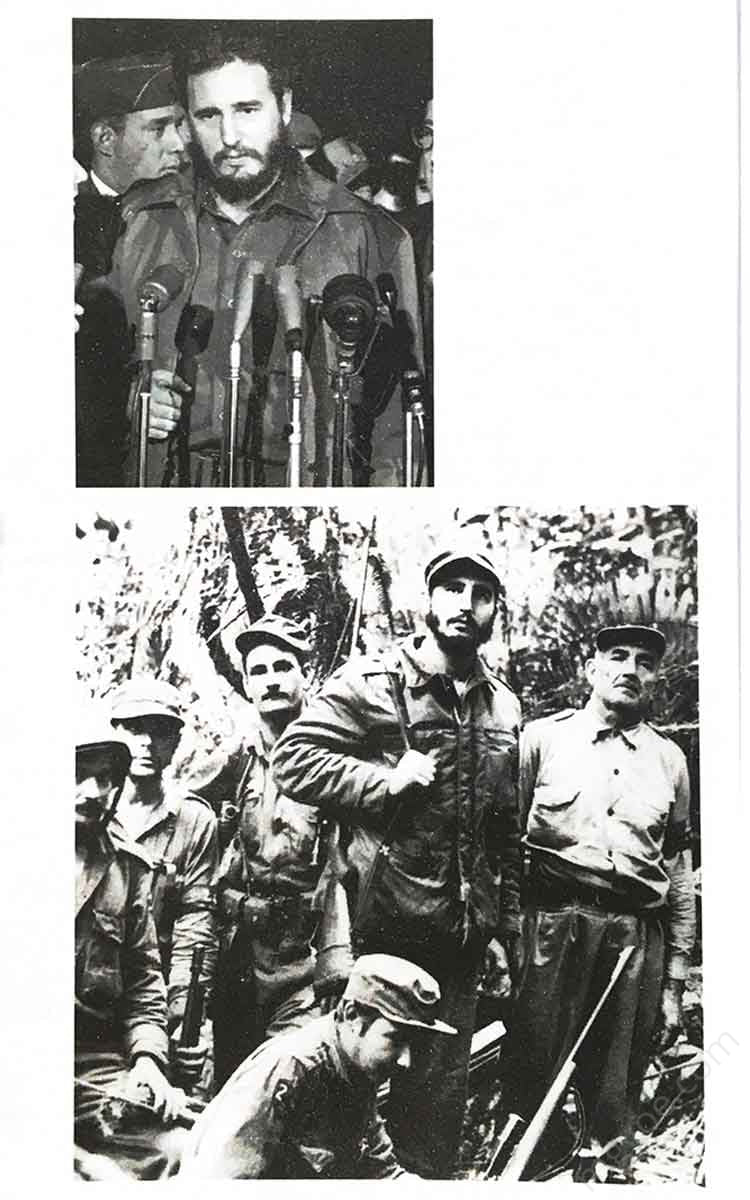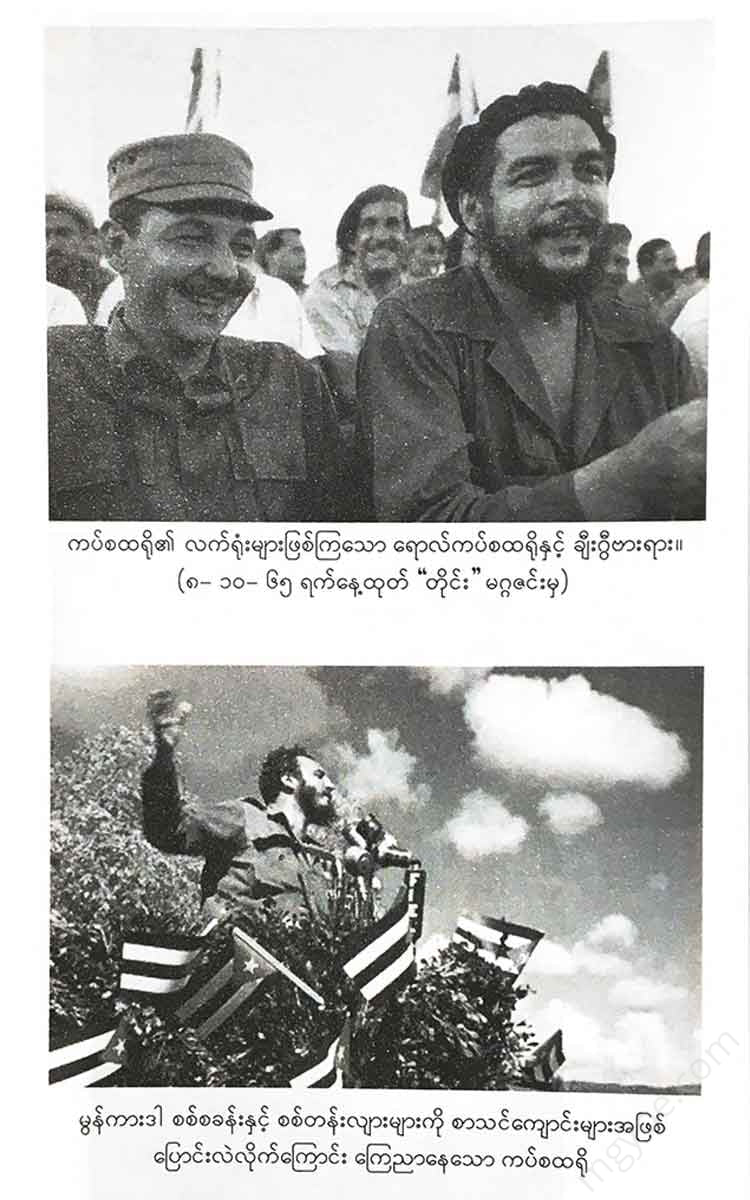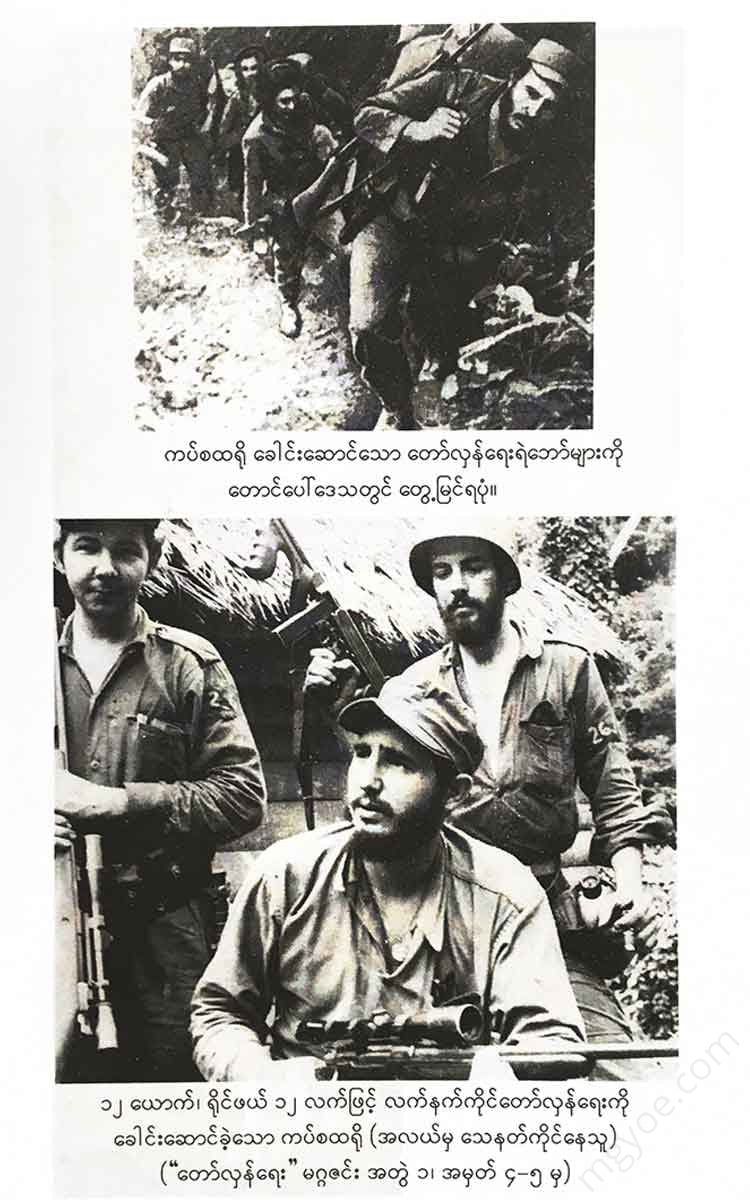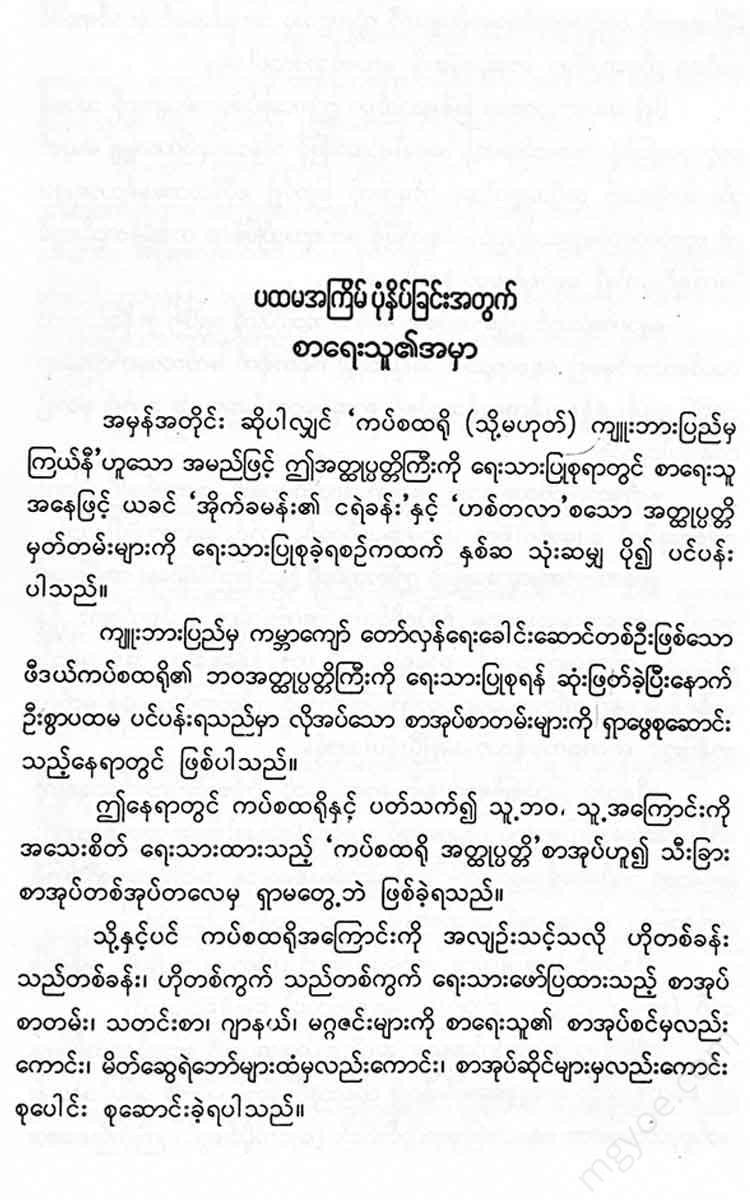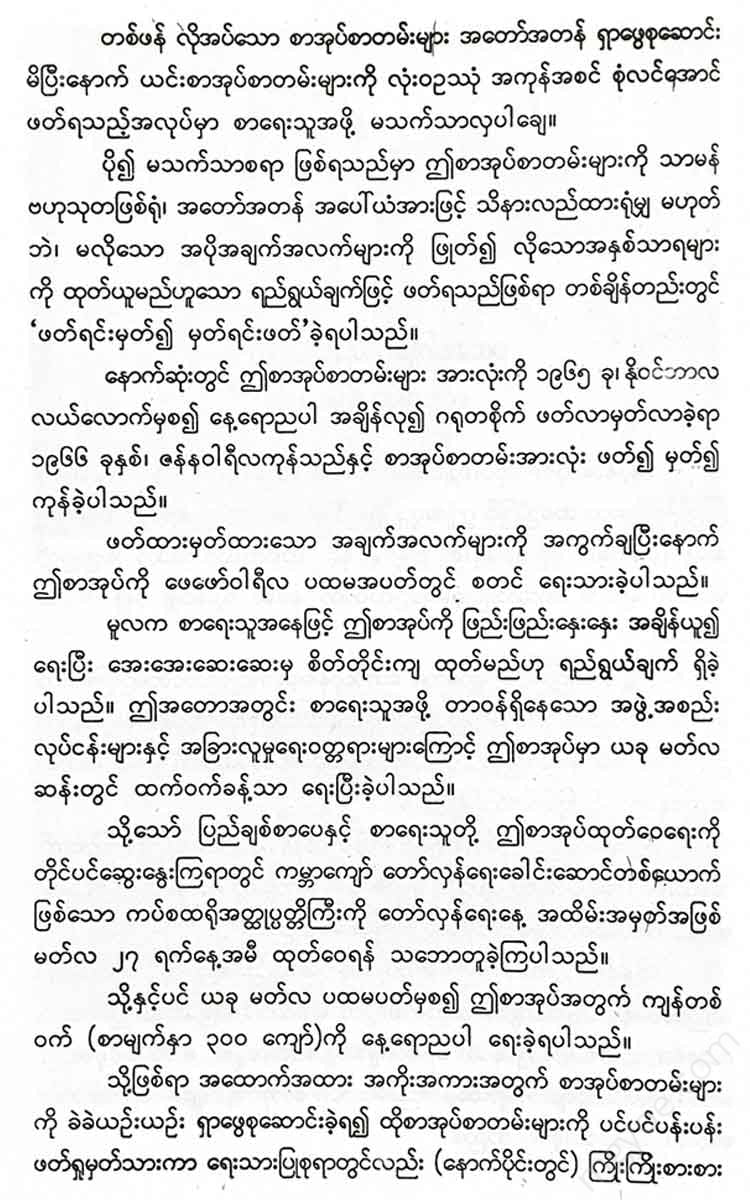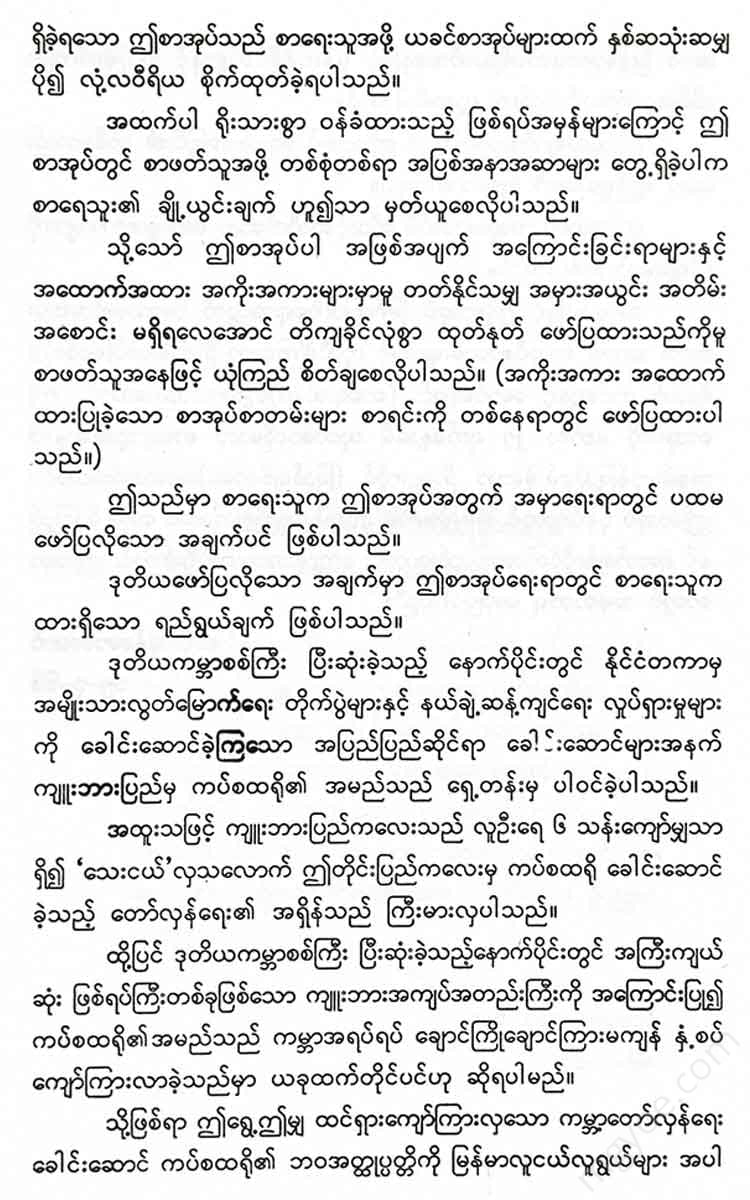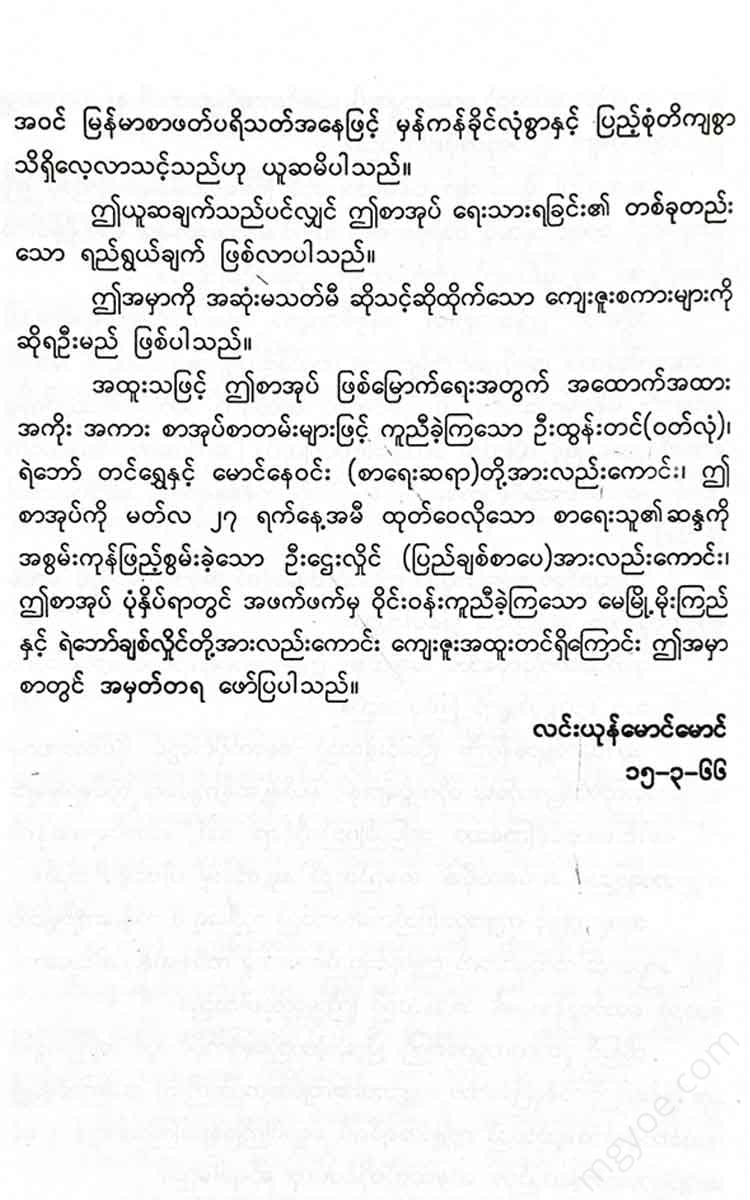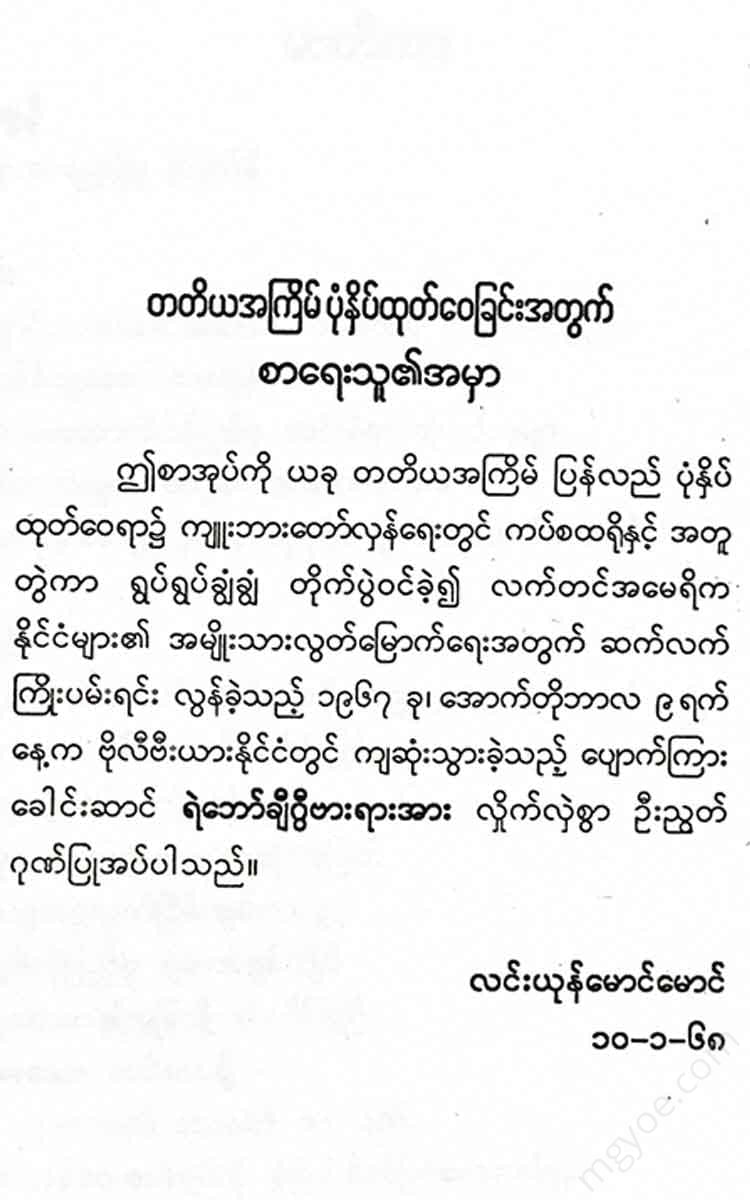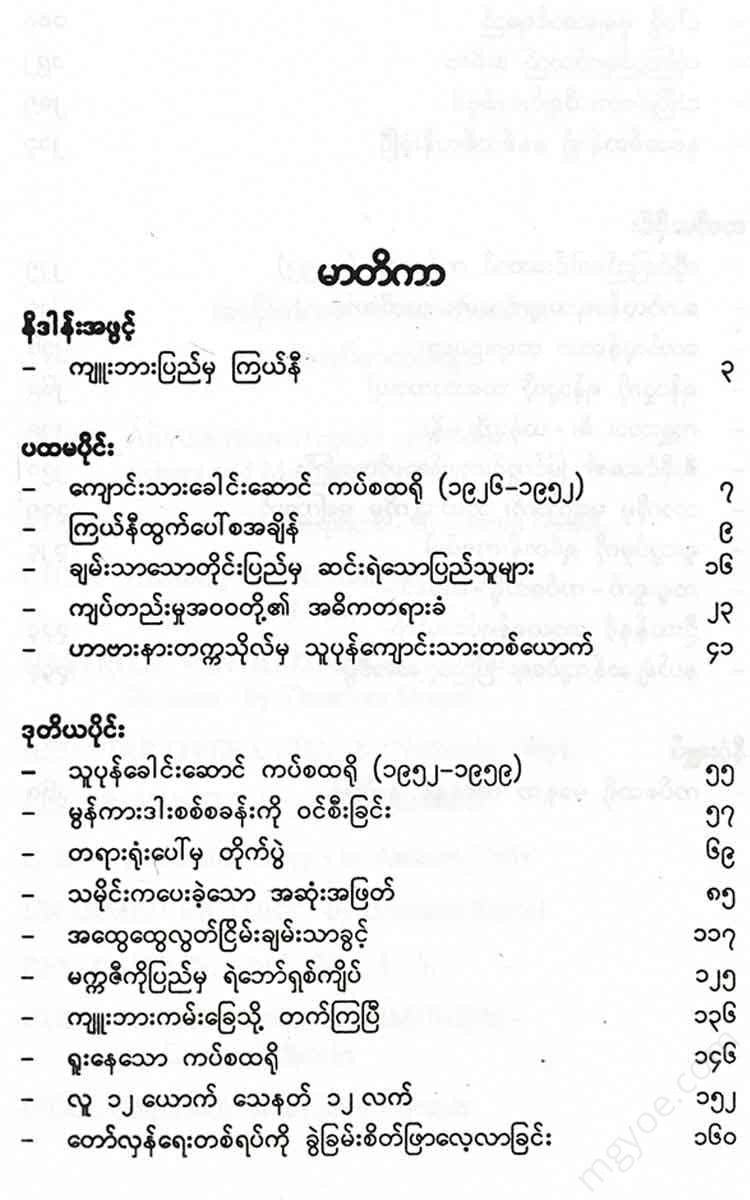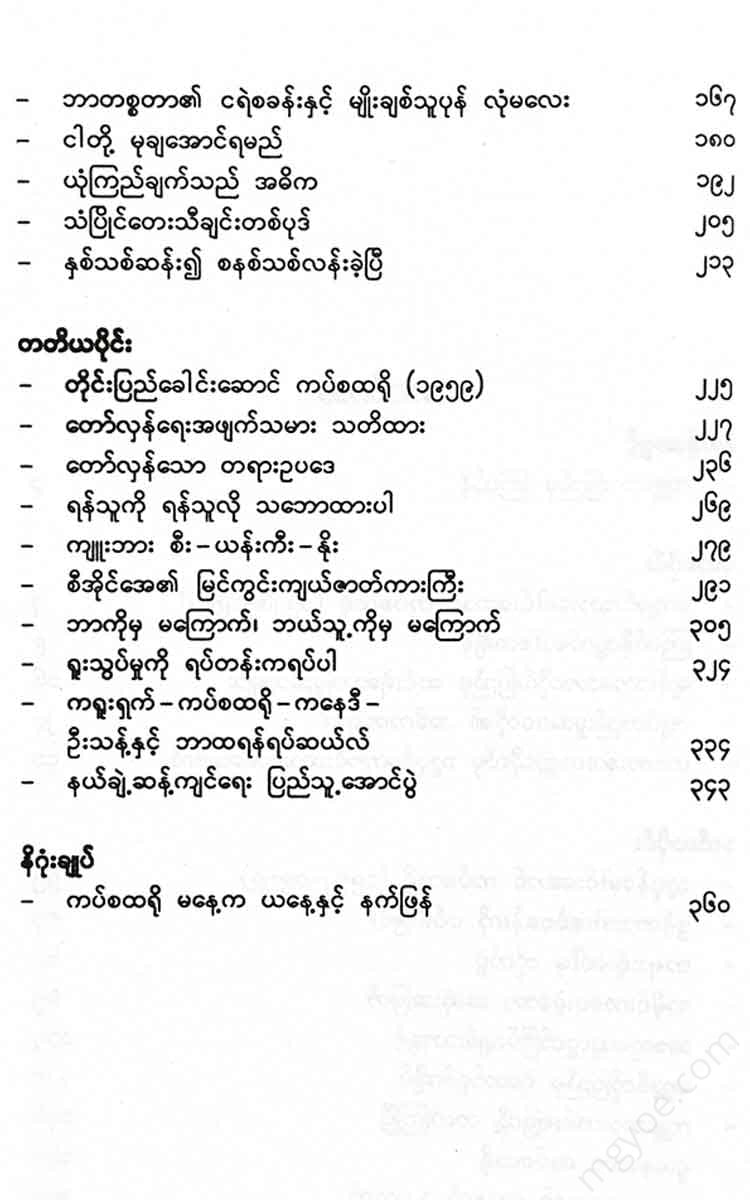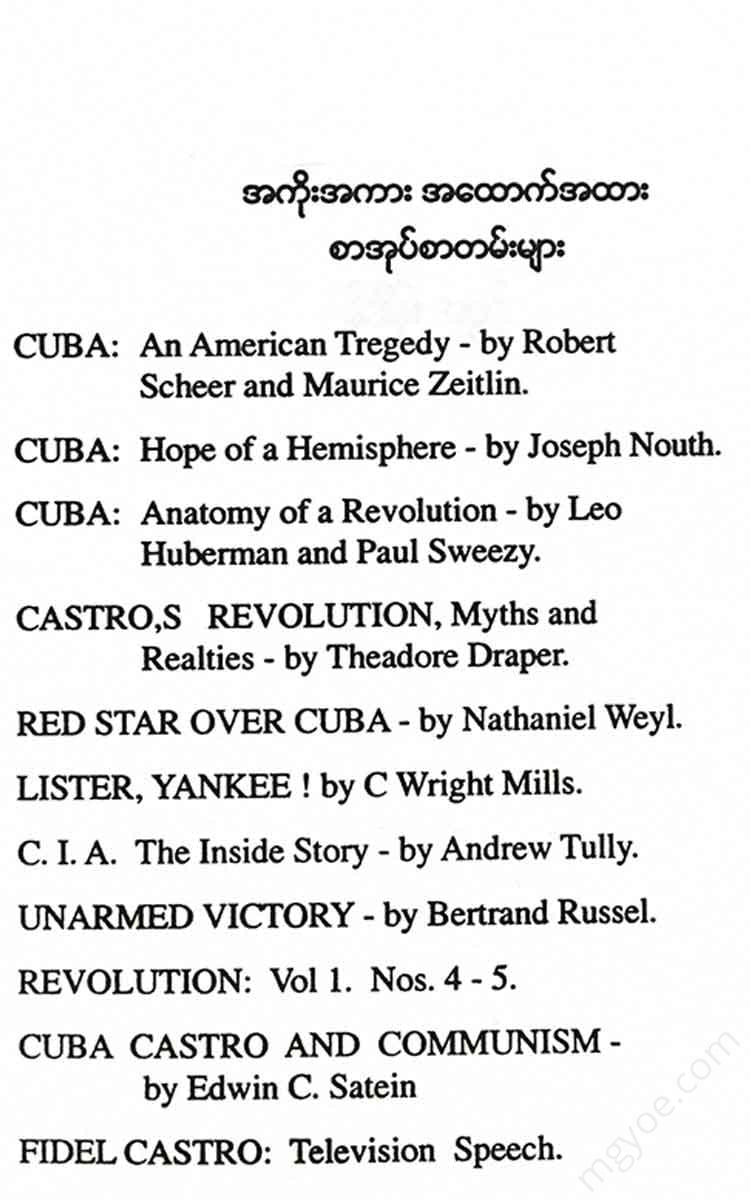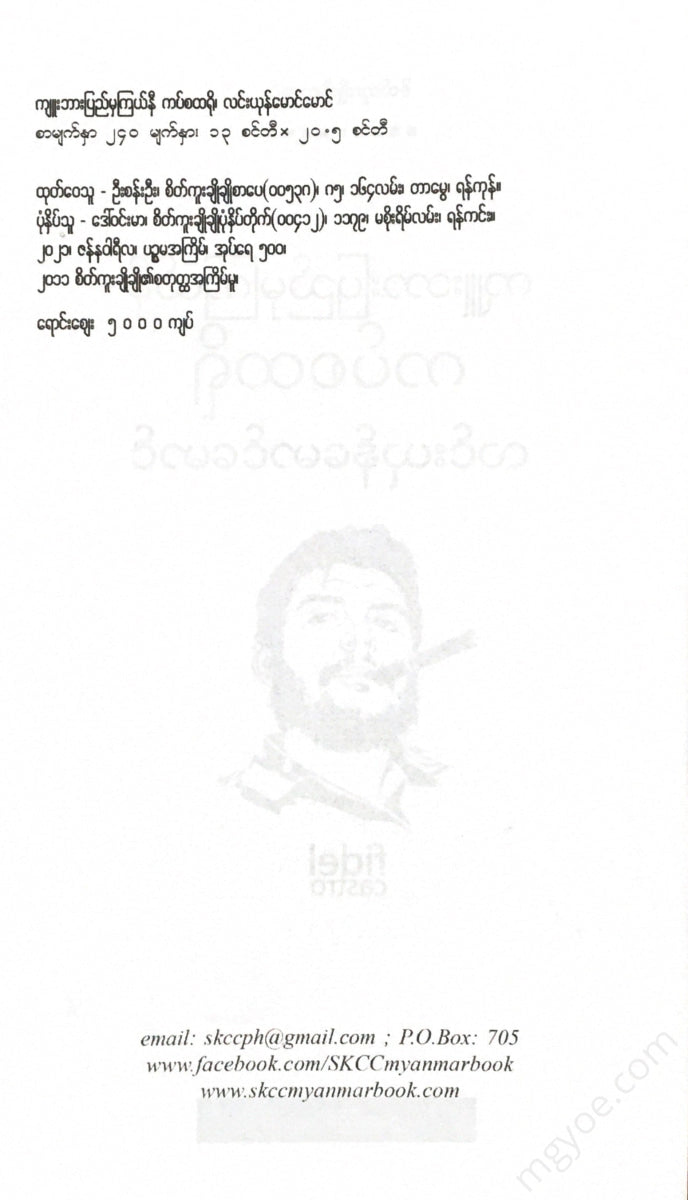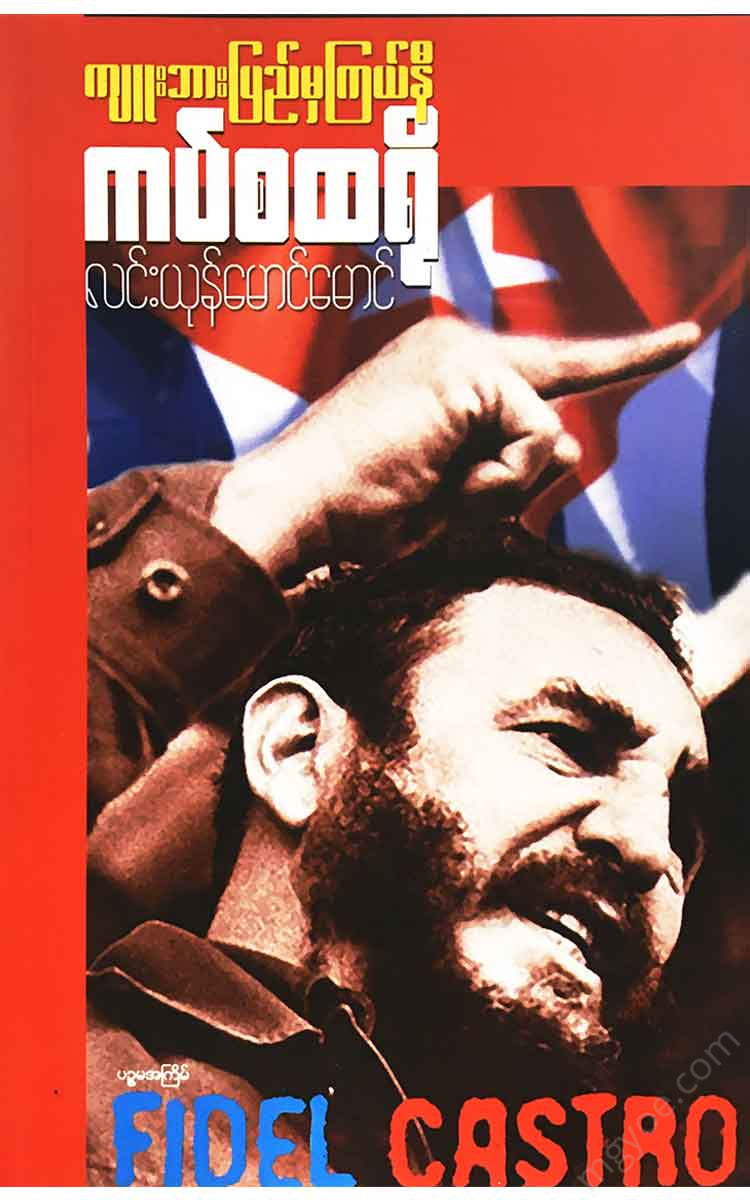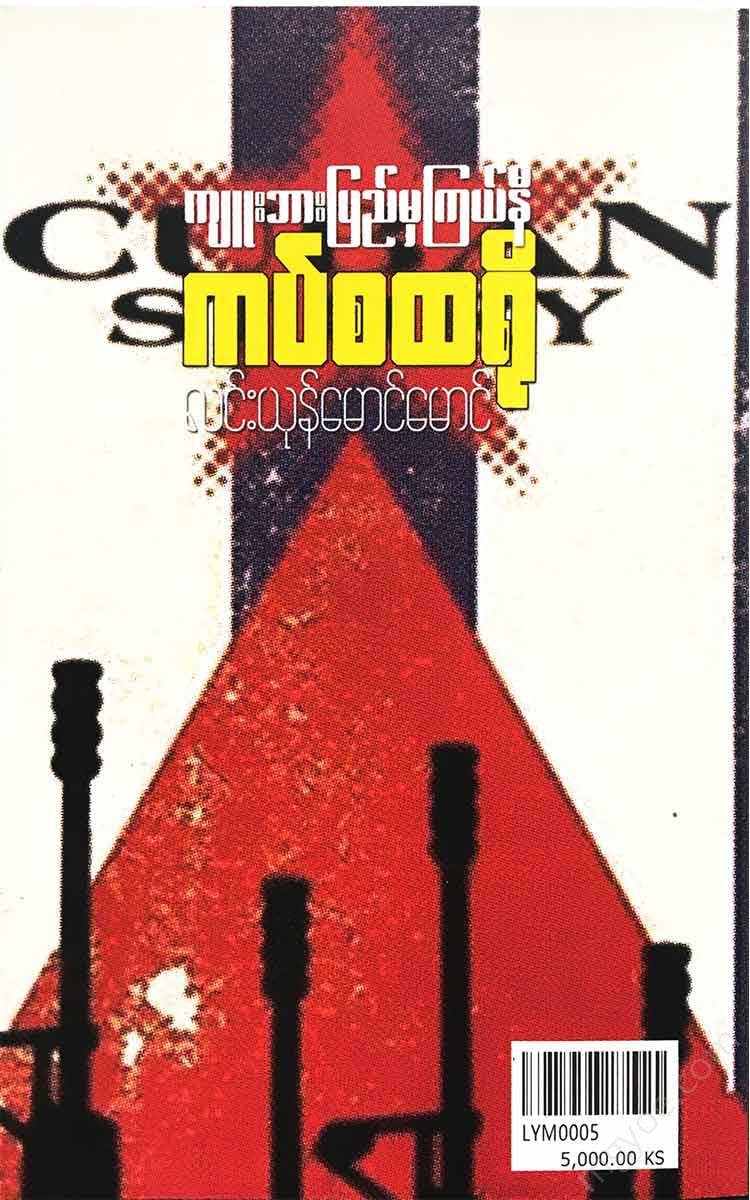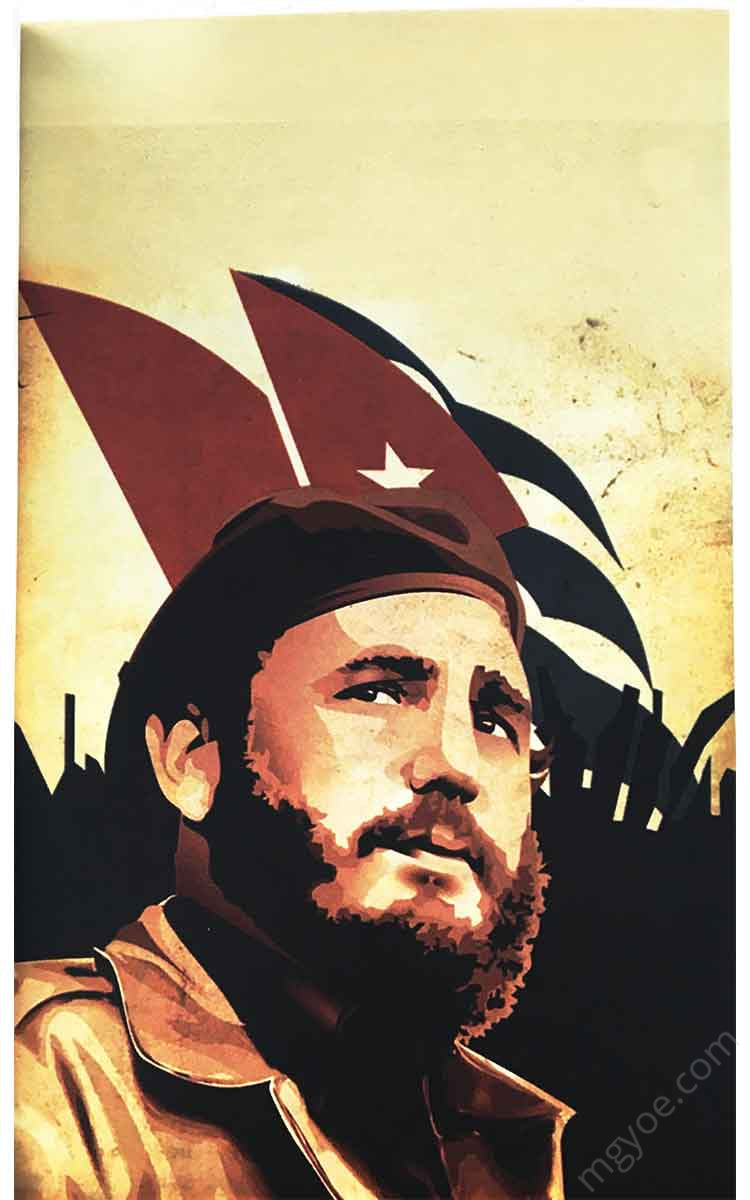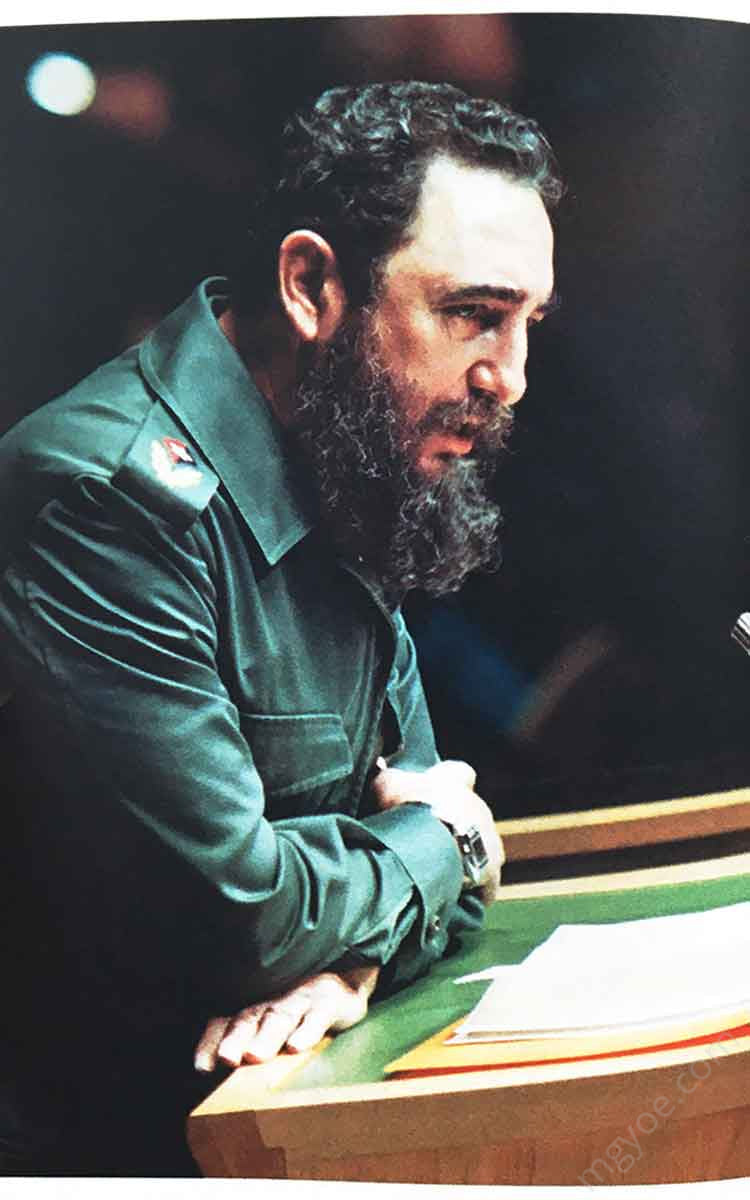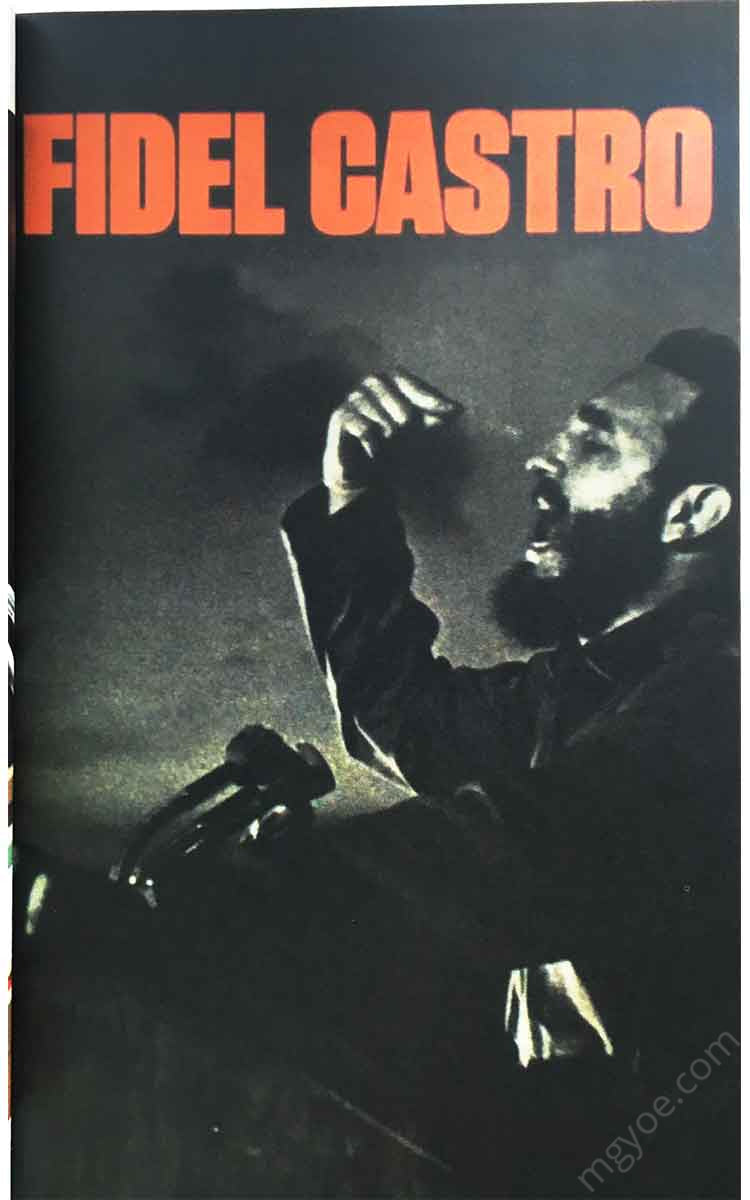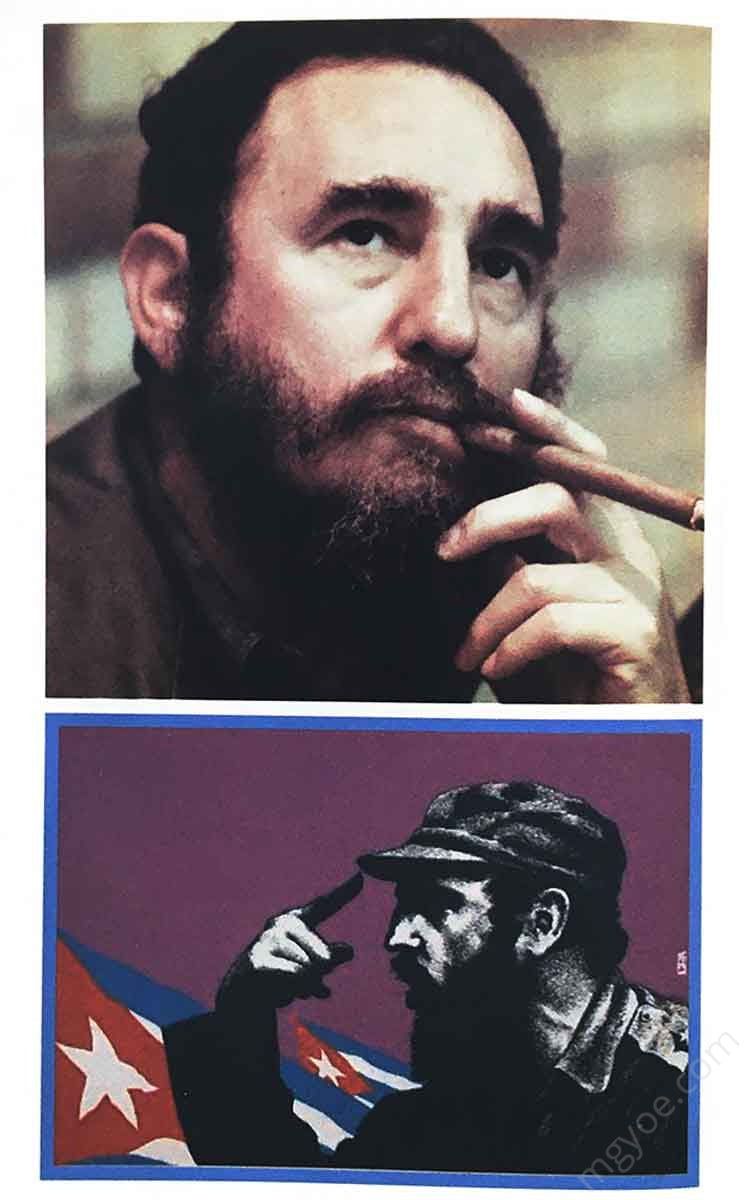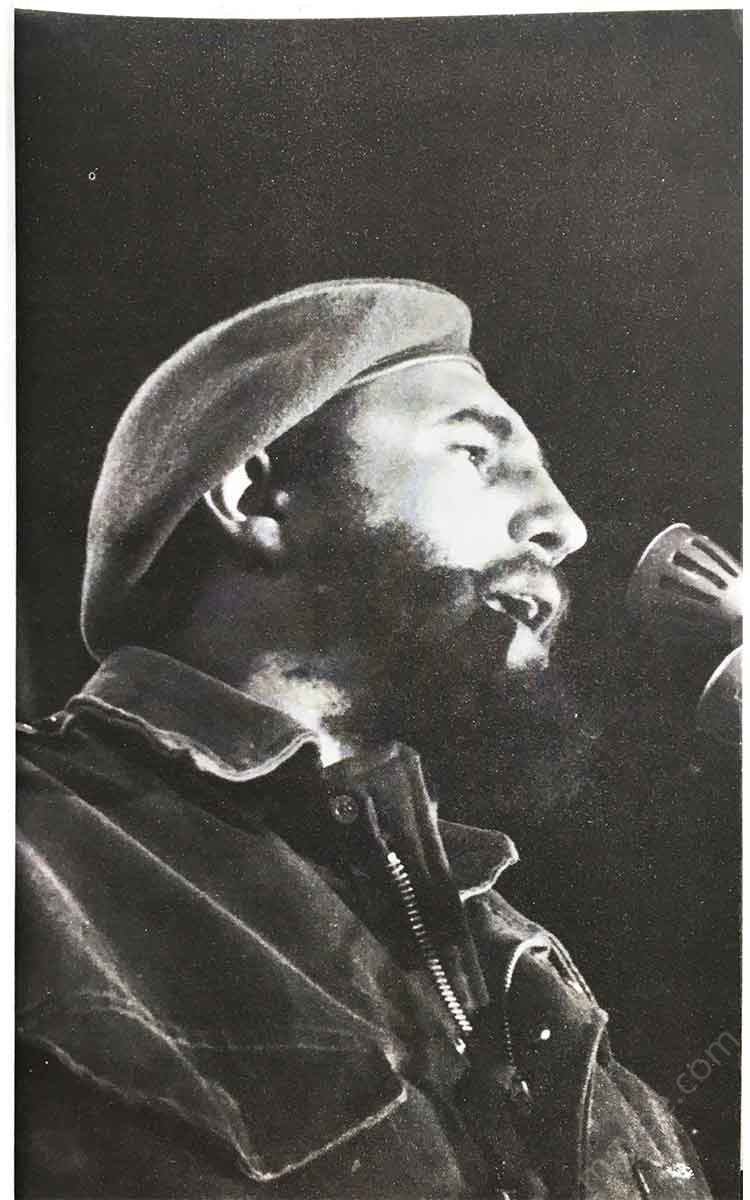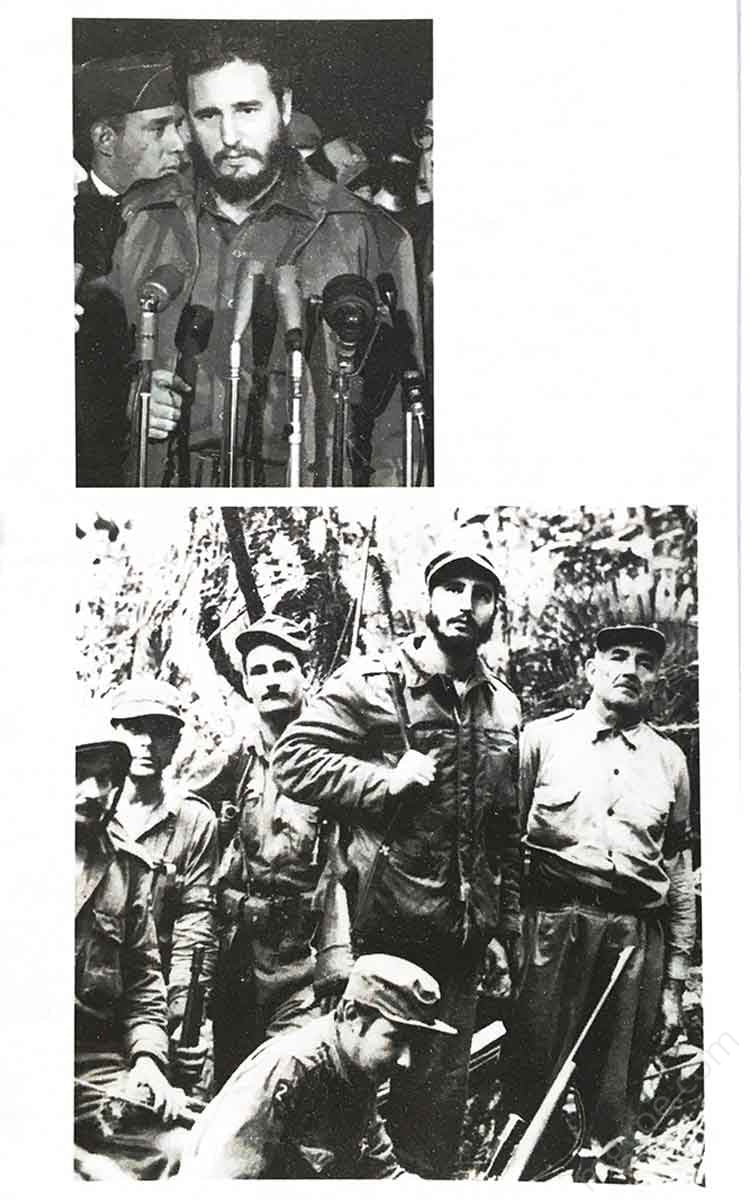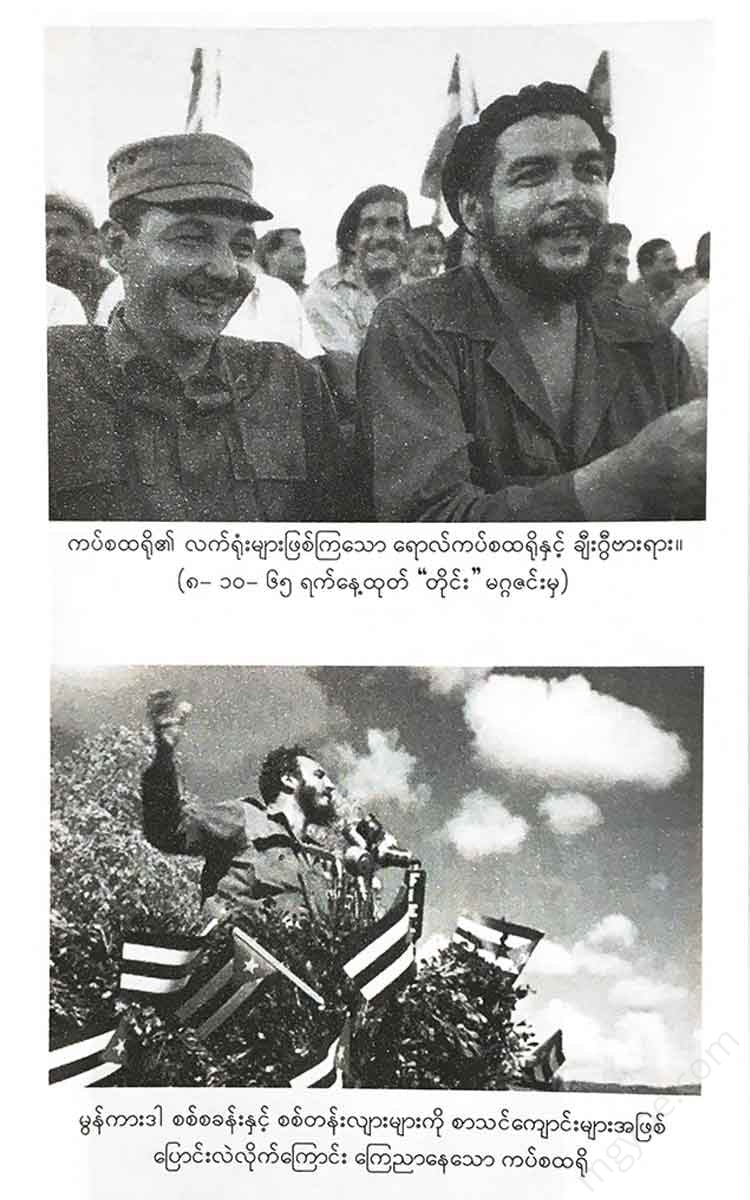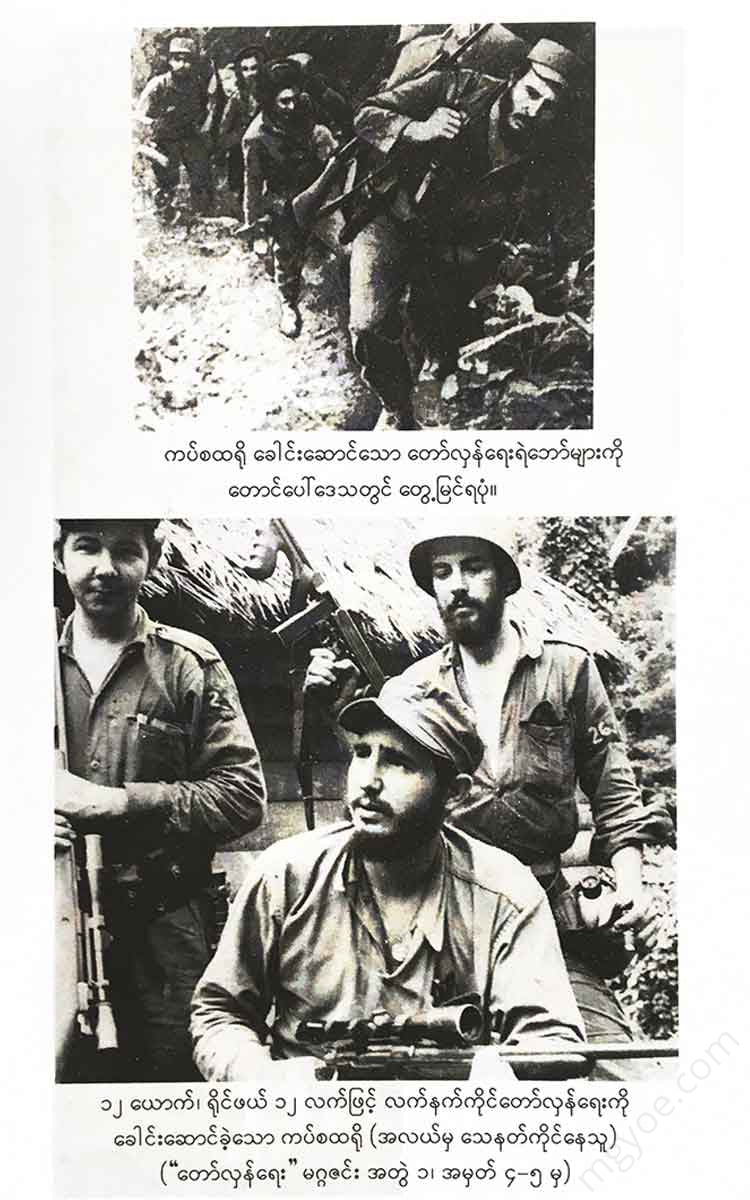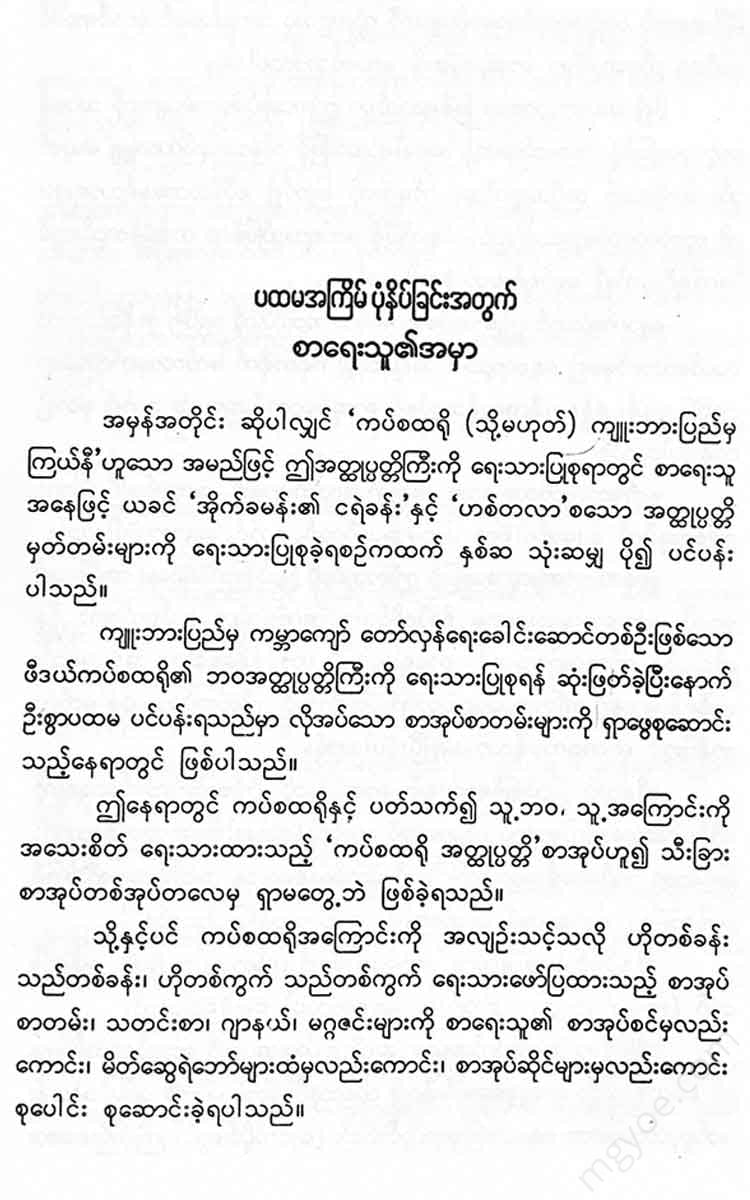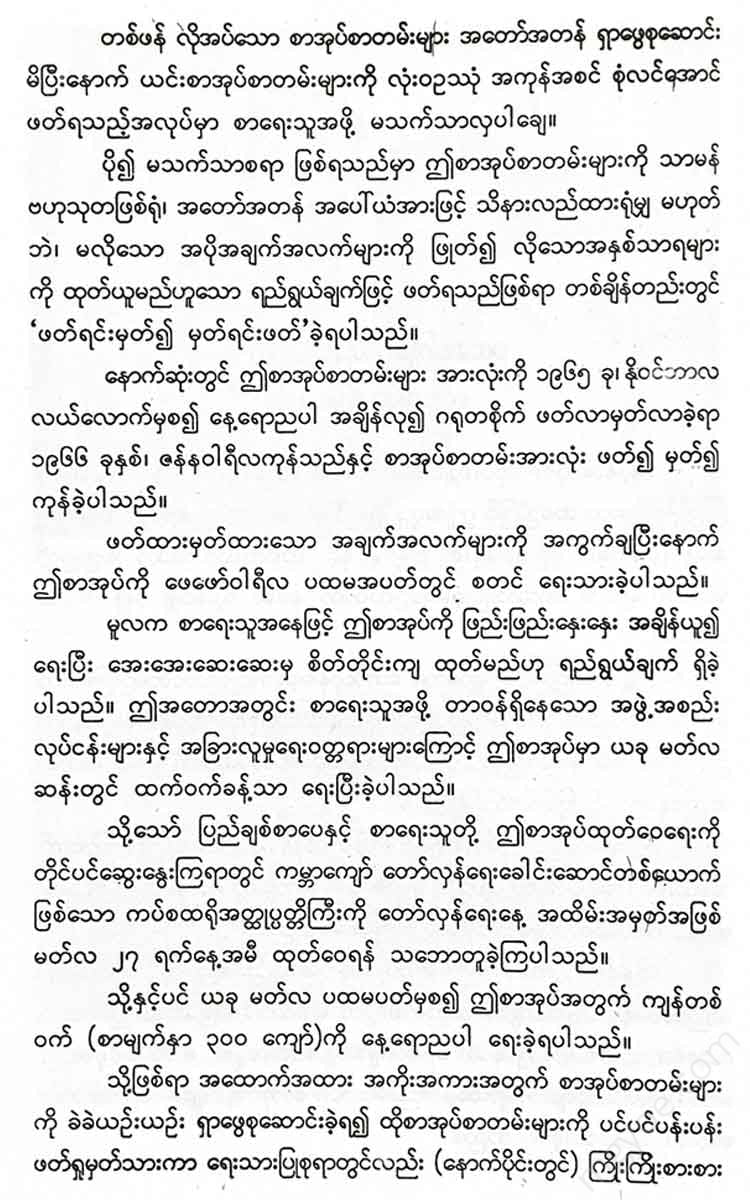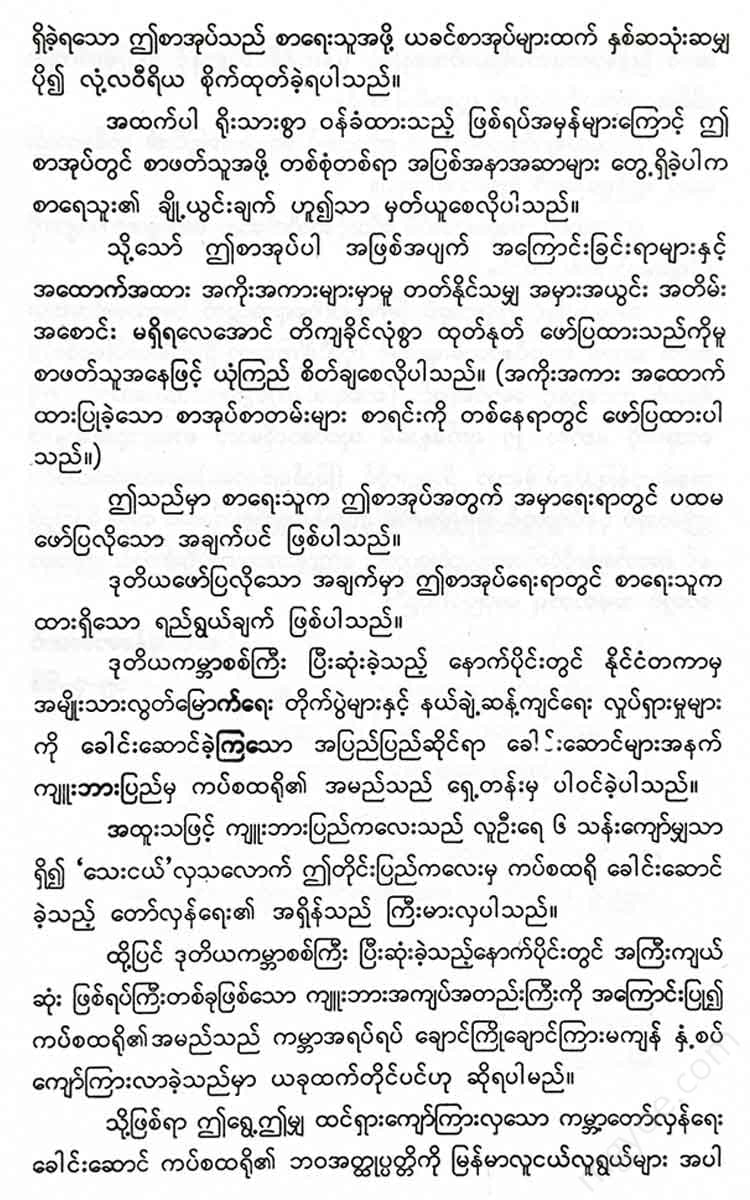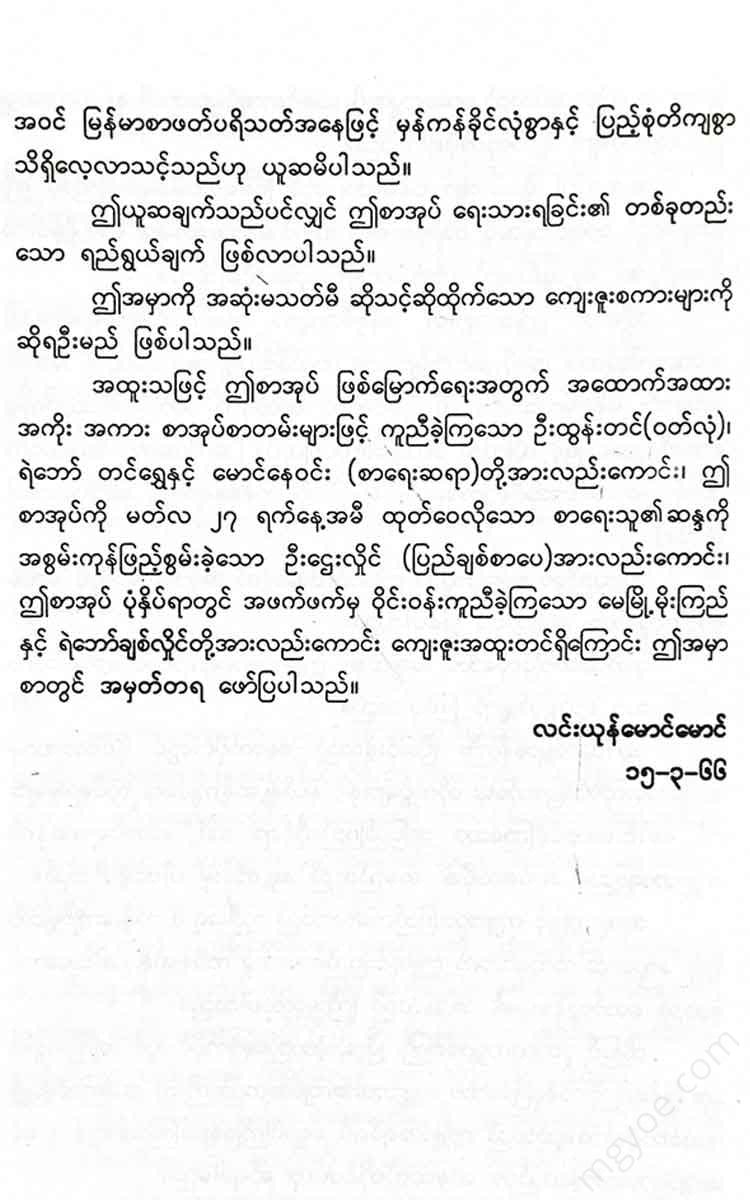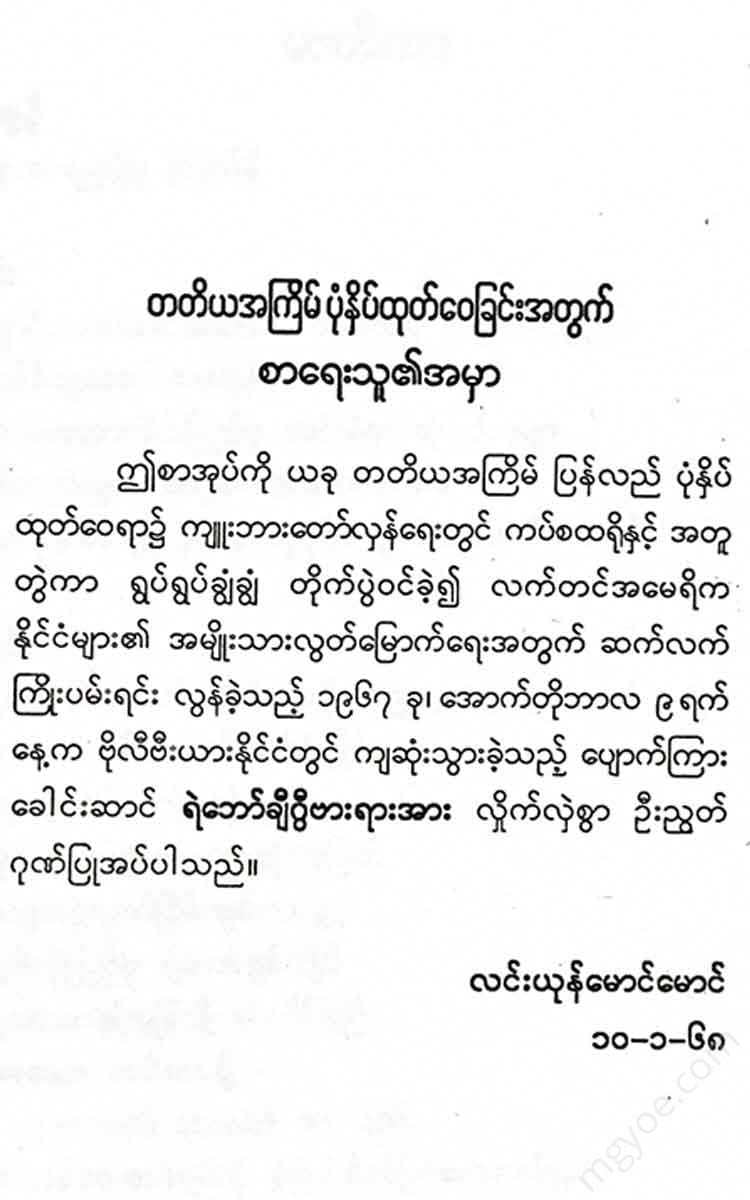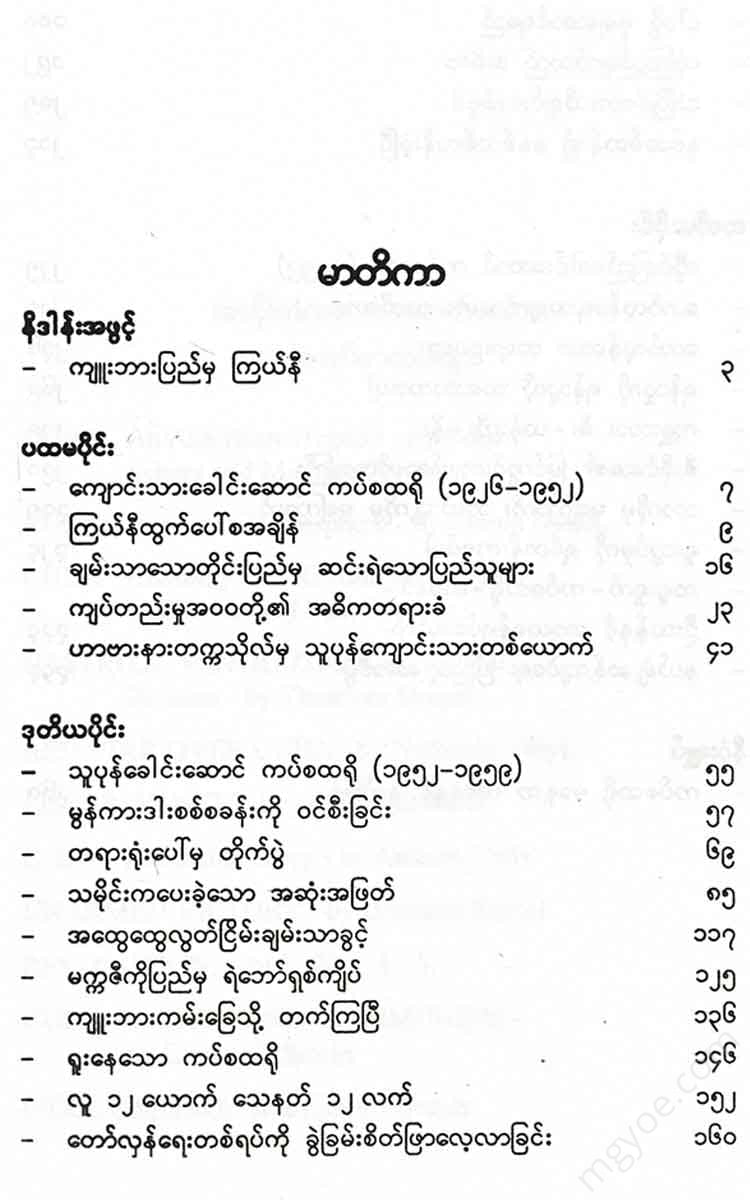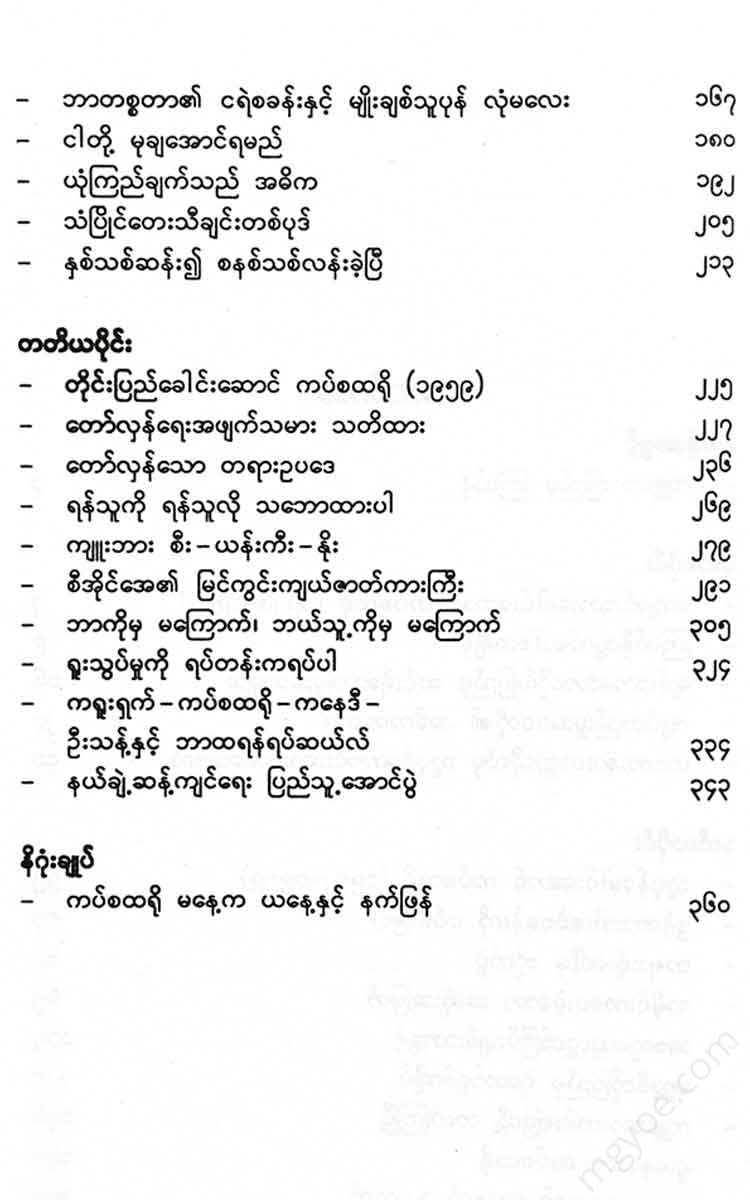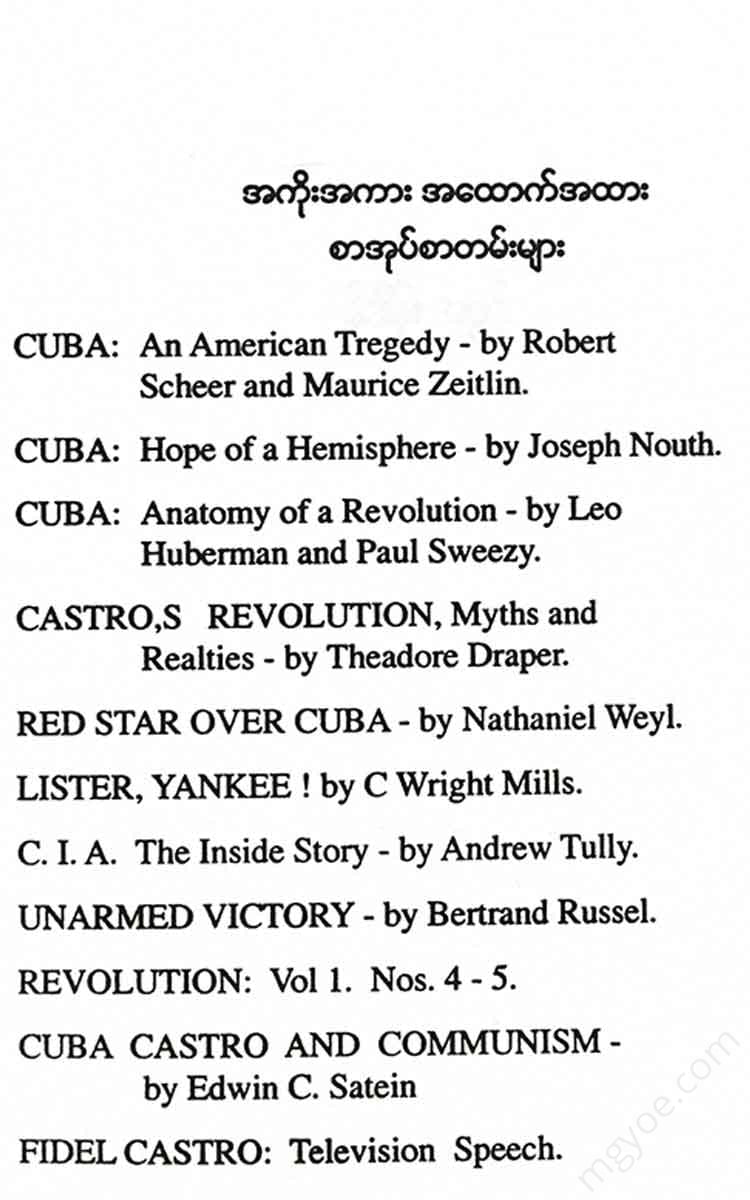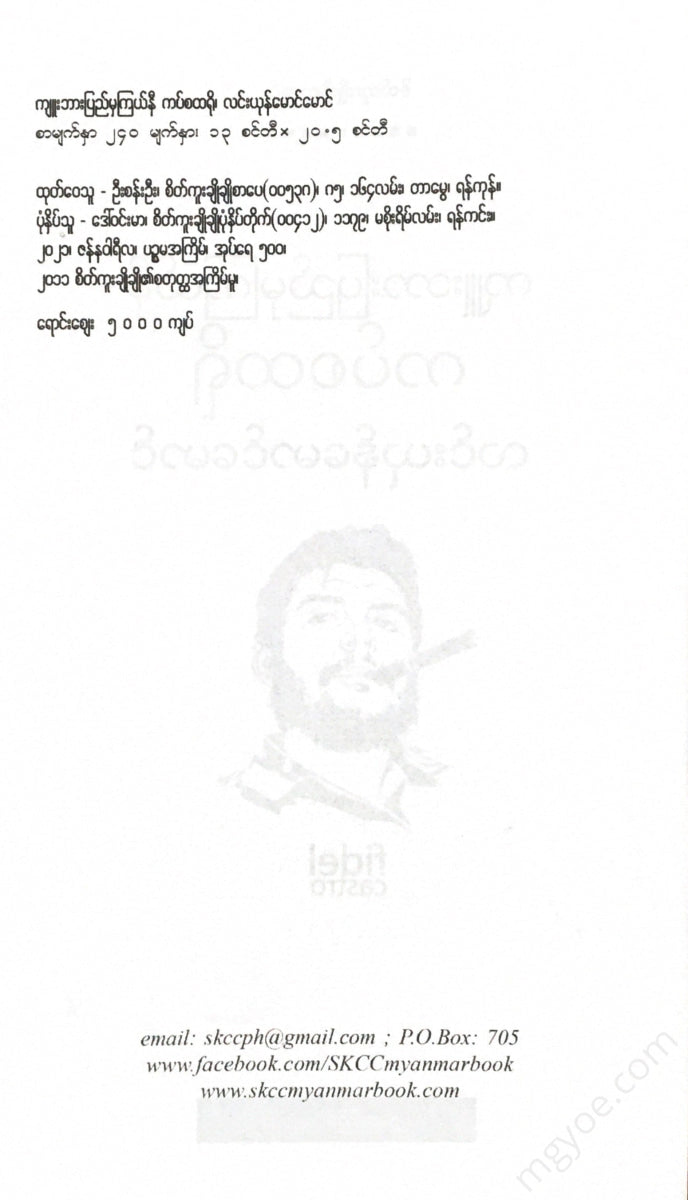စိတ်ကူးချိုချိုစာပေ
Eagle Maung Maung - Red Star Castro from Cuba
Eagle Maung Maung - Red Star Castro from Cuba
Couldn't load pickup availability
In the record of famous figures in connection with the international events that shook the entire world after the end of World War II, the name "Castro" could not be omitted.
Not only that, but this name has been on the front pages of all the world's newspapers for days and months over the past 3 or 4 years. This name has been on the lips of all the people of the world every day. Every country and the whole world has been amazed and amazed by the words and actions of this little country called "Cuba" and its courageous revolutionary leader, "Castro".
Everyone will remember.
In January 1959, the fascist Batista regime in Cuba was overthrown and the revolutionary forces triumphed. Since then, the name of the leader of these revolutionary forces, "Castro", has gradually become prominent.
The US government then tried various methods to overthrow the Cuban revolutionary government led by Castro and restore the corrupt forces to power.
In October 1960, the US government provided arms to the Cuban counter-revolutionaries. In January 1961, the US government closed the US embassy in Cuba and severed diplomatic relations with Cuba. In April 1961, the US Central Intelligence Agency (CIA) planned a military invasion of Cuba by US warships. In the three-day battle, more than a thousand US mercenaries were captured by the Cuban revolutionary government, which brought great shame to the US government and made Castro's name known around the world.
The US government, which had been so embarrassed that it dared not show its face in front of the people of the world, even rejected the Cuban revolutionary government's offer to "peacefully discuss all issues" and was embarrassed again.
In January 1962, the United States imposed an economic embargo on Cuba. Its Latin American allies were prohibited from doing any trade with Cuba. They themselves also cut off all trade with Cuba and urged NATO members to do the same.
The US government violated the internationally accepted norms of international relations and invaded Cuba in such a political, economic and military way. On October 22, 1962, US President Kennedy (the late) himself imposed a naval blockade of the island of Cuba, including nuclear submarines. He also issued an order stating that “the US Navy will search and intercept all ships coming to Cuba. If such a search occurs, it is likely to lead to a third world war. All US military bases around the world are to be prepared for a third world war.”
This is where the Cuban Revolution, which became known in international affairs as The Cuban Crisis, began.
At a time when another world war was on the verge of breaking out due to the coercive threat of the US government, the name of "Castro" was on the front pages of the world's major newspapers. It was impossible to speak without the words "Castro and Cuba" on the lips of the people of the world. Thus, "Castro" became a world-historical leader.
In fact, the actions of the US government were like tarnishing the original ruby. They tried every means and means to weaken Castro's power in Cuba and to overthrow the revolutionary government led by Castro. However, due to the US government's intervention, Castro's power did not weaken, but rather his influence only grew. Despite everything the US government did, the Cuban revolutionary government led by Castro did not fall, but became stronger and stronger day by day. Castro's reputation in the world became more and more prominent.
In short, no matter how badly the US government tried to tarnish his image, it only enhanced the image of Castro, a brilliant revolutionary.
So today, Castro stands proudly over Cuba like a shining red star.
That's right. Castro is the red star of Cuba.
This red star did not emerge easily in Cuba, shining brightly under the bright rays of dawn. It emerged through various means, trying to penetrate the darkness of the night, under the evil and wicked fascist dictator Batista's regime.
Castro (or) the Red Star of Cuba.
When did this red star appear, and how did it shine through the darkness of the Batista fascist regime? How bright is this red star today?
To find definitive answers to these questions, let's take a look back at the life of Castro, or the Red Star of Cuba.
Red star rising time
A gentle breeze blows across the vast expanse of the Atlantic Ocean, a blue expanse as far as the eye can see, heading towards the island of Cuba.
The vast, blue ocean waters are gently rolling and undulating, gently swaying, inspired by the gentle breeze that blows gently.
The little wind, having crossed the blue waters of the Atlantic Ocean, suddenly reached the shores of Cuba. As it gently reached the island, the branches of the sugarcane, coffee, and medicinal plants on the flat land swayed imperceptibly to the left and right due to the wind's gentleness. From there, the little wind, which had not yet died down, crossed the flat land and ran towards the mountains. As it returned, the colorful wild flowers from the mountains greeted it and hugged it.
Castro was born in the town of Biran, in the Mayari region, on the northeastern tip of the beautiful island of Cuba, a place of peace and happiness.
Castro was born on August 13, 1926, and his full name is Fidel Castro Ruz.
Fidel Castro's father, Angel Castro, was a native of the Galicia region in northwestern Spain and had arrived in the Oriente region of Cuba in 1898.
Angel Castro worked as a laborer for the Nipe Bay Co., an American-owned sugarcane plantation company.
Later, when Fidel Castro came to power in Cuba and the conflict with the US government broke out, the US reactionary press did a thorough job of searching for false and malicious news about Castro. Among them, they wrote that Castro's father, Angel Castro, had been fired from his job as mentioned above for illegally stealing sugarcane from a US-owned sugarcane company.
This article is actually a “one-sided story.” At that time, Angel Castro’s job was to inspect sugarcane carts, and he was accused of smuggling sugarcane along with the cart drivers and gatekeepers. However, the relevant American company hired a team of lawyers to prosecute this case, but the case was completely unclear and there was no witness, so the case was closed and Angel Castro was released. This is exactly what the American reactionary press has been trying to fabricate and write about the Castro family as bad news.
After leaving the American sugar company, Ángel Castro bought some land and started his own sugar plantation. The sugar prices were very good at the time, and he worked hard despite being fired from the American sugar company, so Ángel Castro's sugar business grew day by day.
He was married twice. His first wife was a Cuban schoolteacher, with whom he had two children. A boy named Pedro and a girl named Lydia. Then, when his first wife died, he remarried. His second wife was a woman named Linares, with whom he had five more children. They were Angela, Raymond, Fidel, Raul, and Juana, the eldest and youngest of whom were girls.
Fidel Castro's mother, Lina, did not spend her time on household chores like ordinary housewives, but she helped her husband, Angel Castro, with his business. After taking care of the household chores, she would go to the sugarcane fields, the sugarcane warehouse, and the sugar mill to help her husband with his work. In addition, she paid special attention to the education of her children, including Fidel Castro, with great hopes for the future.
Castro attended elementary school in Biran as a child, then moved to a boarding school in Santiago, fifty miles away, where he continued his education.
As he grew older and more mature, Castro took on the appearance of a good man. From a young age, he had a passion for hunting and wandering in the woods. He often went out hunting barefoot, with a gun drawn, accompanied by a pack of hunting dogs. Occasionally, he would hitch a horse and ride along the forest paths.
